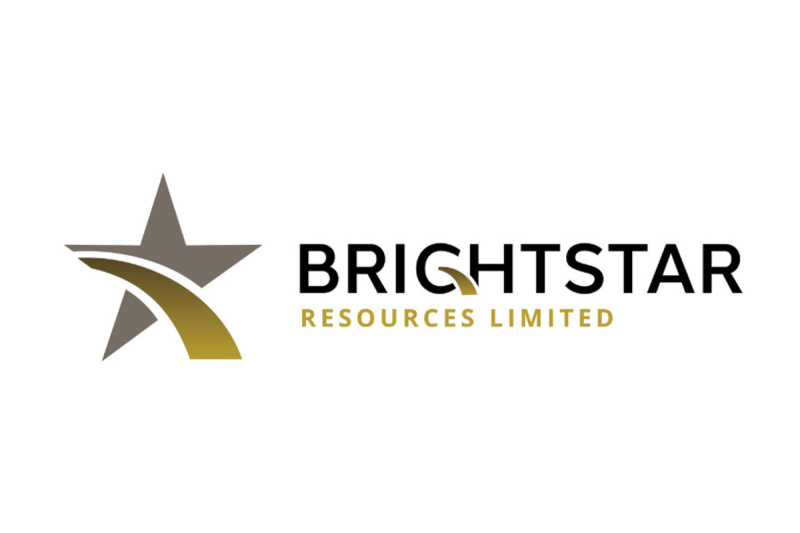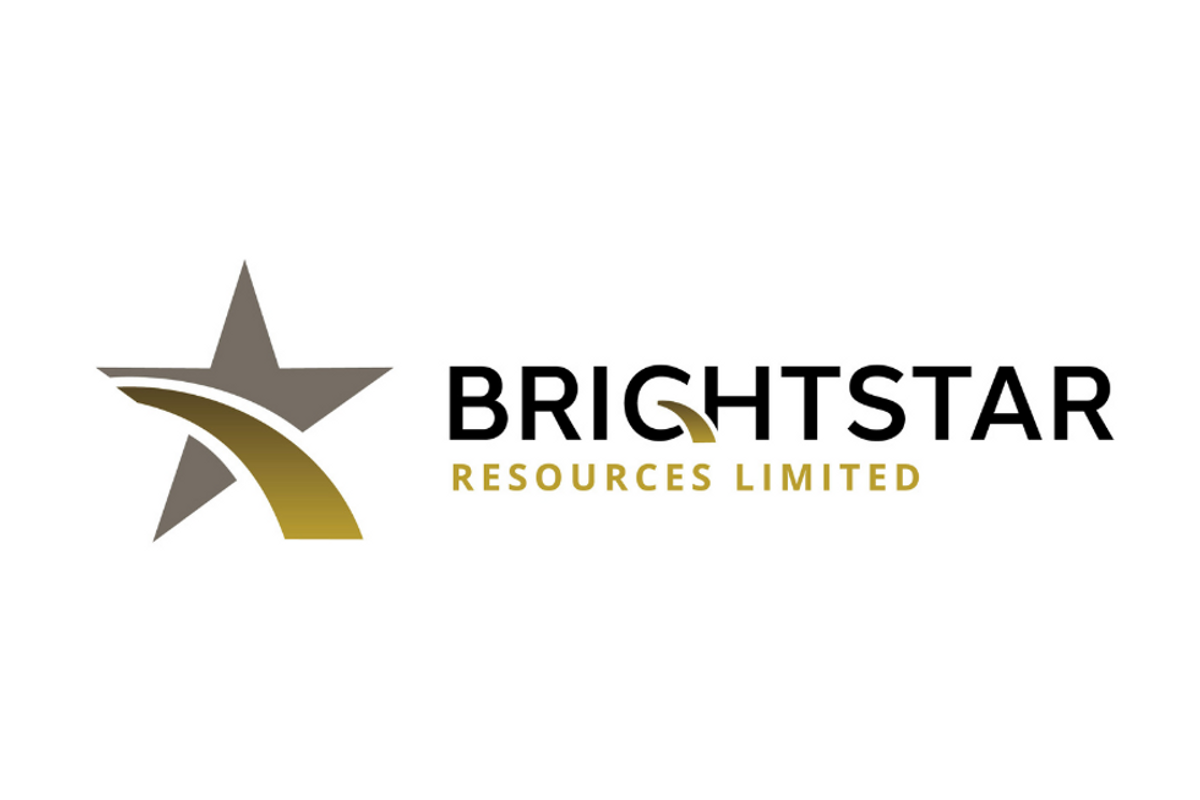
 Brightstar Resources (BTR:AU) has announced Mine life extensions indicated with Laverton drilling
Brightstar Resources (BTR:AU) has announced Mine life extensions indicated with Laverton drilling
Download the PDF here.

 Brightstar Resources (BTR:AU) has announced Mine life extensions indicated with Laverton drilling
Brightstar Resources (BTR:AU) has announced Mine life extensions indicated with Laverton drilling
Download the PDF here.

Senators believe that after reaching a deal to end the longest shutdown on record, they won’t be in the same position early next year.
The bipartisan package that advanced from the Senate late Monday night would, if passed by the House this week, reopen the government until Jan. 30. Lawmakers believe that extension would give them enough time to fund the government the old-fashioned way, making another shutdown a moot point.
But that all depends on whether they can complete work on spending bills, find agreement with the House, and get them on President Donald Trump’s desk before the new deadline.
There’s also the possibility that if the guarantee for a vote on expiring Obamacare subsidies does not go how Senate Democrats want, that could significantly hamper Congress’ ability to avert yet another shutdown.
‘We’ll take them one day at a time,’ Senate Majority Leader John Thune, R-S.D., said. ‘Obviously, it’s another deadline we have to deal with. But the immediate objective is to get the government open and enable those conversations to commence.’
‘There are Democrats and Republicans who are both interested in trying to do something in the healthcare space,’ he continued. ‘And clearly, there is a need. I mean, there is an affordability issue on healthcare that has to be addressed, and the current trajectory we’re on isn’t a sustainable path.’
Sen. Richard Blumenthal, D-Conn., told Fox News Digital that Democrats needed to be united in their demand that ‘Republicans be held to their promise of having a vote on the healthcare subsidies in December.’
Thune reiterated his guarantee on Sunday and teed up the second week of December as the deadline for getting a Democratic proposal to the floor.
‘The future is unpredictable, but we need to continue our fight unequivocally, unyieldingly, for affordable healthcare insurance through extending the subsidies and other measures under the [Affordable Care Act],’ Blumenthal said. ‘Republicans have a reflexive obsession with repealing or destroying the ACA.’
The hope is that funding the government with appropriations bills will be the key to preventing another shutdown.
Senate Appropriations Chair Susan Collins, R-Maine, said that she anticipated Thune to tee up a new package of spending bills, this one combining the defense, labor, transportation and housing bills into one chunk.
‘The more appropriations bills that we’re able to pass, the better off we’re going to be, the better off the American people will be served,’ she said.
Sen. Mike Rounds, R-S.D., a member of the Senate Appropriations Committee, was unsure if lawmakers would be in the same spot again come January.
But he believed that the desire to move forward with spending bills, spurred largely by the bipartisan deal struck to reopen the government, was a good start.
‘It makes it a whole lot easier not to have a shutdown again,’ he said.
Despite the rancor and frustration from the Democratic side of the aisle over the collapse of their healthcare demand, they also want to pass bipartisan funding bills, largely in a bid to push back against cuts made by the Trump administration.
However, Sen. Chris Murphy, D-Conn., predicted that it would be quite difficult to pass a long-term bipartisan budget.
‘We cannot sign on to a long-term budget that does nothing on healthcare and has nothing to stop the destruction of our democracy,’ he said. ‘You know, there are no real protections in the short-term spending bill against Trump’s illegality.’
For now, some see the January deadline as ‘light years away,’ like Sen. John Kennedy, R-La., while others aren’t ready to make a prediction about what comes next.
‘Just one step at a time,’ Sen. Chris Van Hollen, D-Md., told Fox News Digital.

Frustration is boiling over among Democratic ranks against Senate Minority Leader Chuck Schumer, D-N.Y., after walking away from the longest government shutdown on record largely empty-handed.
Some argue that Schumer squandered key leverage and failed to steer his caucus through the chaos to victory.
‘I think that people did what they could to get us out of the shutdown, but what has worked in the past isn’t working now,’ Sen. Elissa Slotkin, D-Mich., said. ‘And so, we need to meet the moment, and we’re not doing that.’
Slotkin, like others in the Senate Democratic caucus, ‘wanted something deliverable on the price of healthcare.’ The core of their shutdown strategy was to force Republicans and President Donald Trump to make a deal on expiring Obamacare subsidies, but that didn’t happen.
Sen. Bernie Sanders, I-Vt., argued that getting rid of Schumer would be difficult.
‘Chuck Schumer is part of the establishment,’ Sanders told MSNBC. ‘You can argue, and I can make the case, that Chuck Schumer has done a lot of bad things, but getting rid of him — who’s going to replace him?’
Other Democrats weren’t so resigned.
Graham Platner, a Democratic Senate candidate running to replace Sen. Susan Collins, R-Maine, placed the collapse of Senate Democrats’ unified front squarely on leadership.
‘The Democratic Party at the leadership level has become entirely feckless,’ Platner said in a video posted by Our Revolution, a political action organization started as an offshoot of Sanders’ presidential campaign.
‘What happened last night is a failure of leadership in the most clear terms,’ he said after the Senate passed the bipartisan deal Monday, sending it to the House. ‘Sen. Schumer is the minority leader. It is his job to make sure his caucus is voting along the lines of what’s going to be good for the people of the United States. He could not maintain that.’
Schumer and congressional Democrats walked away from the shutdown stalemate in the Senate largely empty-handed, save for some victories on ensuring furloughed federal workers would receive back pay, the reversals of firings made by the Trump administration during the shutdown and future protections for workers.
Still, they fell far short of their goal to extend the expiring subsidies, which are set to sunset at the end of this year.
Those subsidies, initially passed as an emergency response to COVID-19 in 2021, were always supposed to be temporary. But Democrats fear that their sudden expiration could leave millions of policyholders with substantially higher premiums overnight if allowed to expire.
But as mounting pressure grew — and no sign of Republicans wavering on the subsidies — eight Democrats voted to put the government on the path to reopening.
To some onlookers, Schumer had held the party line for as long as possible.
Sen. Catherine Cortez Masto, D-Nev., one of the eight Democrats who voted with Republicans to reopen the government, said she respected Schumer’s leadership.
‘He’s done a good job,’ Masto said. ‘He kept us in the loop and was open to our conversations.’
Sen. Chris Murphy, D-Conn., argued that the problem wasn’t Schumer, it was his colleagues.
‘Sen. Schumer didn’t want this to be the outcome, and I pressed hard for it not to end like this,’ Murphy said. ‘He didn’t succeed, let’s not sugarcoat that. But the problem is, the problem exists, inside the caucus. The caucus has to solve it.’
Republicans, however, spent much of the shutdown arguing that Schumer had waged the shutdown to appease his base — a base that had wanted to see some sort of resistance to Trump.
‘This is how it always would end,’ Sen. Ted Cruz, R-Texas, said on Monday evening. ‘Chuck Schumer has a political problem. He’s afraid of being primaried from the left. And so, the Democrats inflicted this shutdown on the American people in order to prove to their radical left-wing base that they hate Donald Trump.’
‘I think a lot of Americans have suffered as a result of this political stunt,’ Cruz added.
On the other hand, many Democrats made it clear they believed Schumer had failed to effectively mount resistance to Trump’s agenda on healthcare.
CNN data analyst Harry Enten compiled polls dating back to 1985 comparing the popularity of Democratic leaders among Democratic voters. Schumer, he found, was the least popular of them all.
‘Chuck Schumer — his days are over. If he cannot keep his caucus together, he needs to go,’ Sunny Hostin, a co-host of ‘The View,’ told audiences on Monday.
‘Chuck Schumer has not met this moment, and Senate Democrats would be wise to move on from his leadership,’ Rep. Mike Levin, D-Calif., said.
California Gov. Gavin Newsom summed up his thoughts in a one-word post to X.
‘Pathetic,’ Newsom said.

The House of Representatives appears to be on a glide path to ending the longest government shutdown in history, with lawmakers racing back to Capitol Hill after six weeks out of session.
The House Rules Committee will meet to consider the Senate’s amended federal funding plan sometime after 5 p.m. Tuesday, two sources told Fox News Digital.
In other words, the 42-day shutdown — which has led to thousands of air travel delays, left millions of people who rely on federal benefits in limbo, and forced thousands of federal workers either off the job or to work without pay — could come to an end before the end of this week.
The House Rules Committee is the final hurdle for most legislation before it sees House-wide votes. Lawmakers on the key panel vote to advance a bill while setting terms for its consideration, like possible amendment votes and timing for debate.
The funding bill at hand is expected to advance through the committee on party lines. Democrats on the panel are likely to oppose the measure in line with House Democratic leaders, while Republicans have signaled no meaningful opposition.
Reps. Chip Roy, R-Texas, and Ralph Norman, R-S.C., the two Republicans on the committee who have most often opposed GOP leaders’ legislation for not being conservative enough, both suggested they would be supportive of the funding measure.
Roy told Fox News Digital on Monday night that he would vote ‘yes’ on the bill on the House floor, meaning he would likely not oppose it in the House Rules Committee.
The Texas Republican is currently running to be attorney general of the Lone Star State.
Norman told Fox News Digital via text message Tuesday morning, when asked about both his Rules Committee and House floor votes, ‘My support is based on READING the FINE PRINT as it relates to the 3 bills especially VERIFYING the top line spending limits as we previously passed.’
‘If ‘THE FINE PRINT MATCHES’ what’s being reported, I will be a yes,’ Norman said.
The South Carolina Republican, who is running for governor, was referring to three full-year spending bills that are part of the latest bipartisan compromise passed by the Senate on Monday night.
Terms of the deal include a new extension of fiscal year (FY) 2025 federal funding levels through Jan. 30, in order to give congressional negotiators more time to strike a longer-term deal on FY 2026 spending.
It would also give lawmakers some headway with that mission, advancing legislation to fund the Department of Agriculture and the Food and Drug Administration; the Department of Veterans Affairs and military construction; and the legislative branch.
They are three of 12 individual bills that are meant to make up Congress’ annual appropriations, paired into a vehicle called a ‘minibus.’
In a victory for Democrats, the deal would also reverse federal layoffs conducted by the Trump administration in October, with those workers getting paid for the time they were off.
It also guarantees Senate Democrats a vote on legislation extending Obamacare subsidies that were enhanced during the COVID-19 pandemic, which are set to expire at the end of this year.
Extending the enhanced subsidies for Obamacare, also known as the Affordable Care Act (ACA), was a key ask for Democrats in the weekslong standoff.
No such guarantee was made in the House, however, so Democrats effectively folded on their key demand in order to end the shutdown — a move that infuriated progressives and left-wing caucus leaders in Congress.
The full House is expected to take up the measure sometime after 4 p.m. on Wednesday, according to a notice sent to lawmakers.
There will first be a ‘rule vote’ for the bill where lawmakers are expected to green-light debate on the House floor, followed by a vote on the measure itself sometime Wednesday evening.
House schedules for both Tuesday and Wednesday were left intentionally fluid to allow for lawmakers to return to Washington amid nationwide flight delays and cancellations, mostly imposed by the shutdown.
The House was last in session on Sept. 19, when lawmakers passed legislation to keep the government funded through Nov. 21.
It passed with support from one House Democrat, Rep. Jared Golden, D-Maine, and opposition from two Republicans, Reps. Thomas Massie, R-Ky., and Victoria Spartz, R-Ind.
No further House Republicans have signaled public opposition to the new measure so far.


Saga Metals Corp. (‘SAGA’ or the ‘Company’) (TSXV: SAGA,OTC:SAGMF) (OTCQB: SAGMF) (FSE: 20H) a North American exploration company advancing critical mineral discoveries, is pleased to announce the commencement of Phase 1 diamond drilling at the high-priority Trapper Zone on its 100%-owned Radar Titanium-Vanadium-Iron (‘Ti-V-Fe’) Project located near Cartwright, Labrador. This marks a significant milestone in advancing the Trapper Zone toward a maiden indicated Mineral Resource Estimate (‘MRE’), building on the successful maiden drill program completed earlier this year at the adjacent Hawkeye Zone.
Highlights

Figure 1: Gladiator Drilling’s Duralite 800 diamond drill shack setup in the Trapper Zone at the Radar Project.
Drill Program Details
Drilling at Trapper will employ oriented NQ core (47.6 mm diameter) to capture detailed structural data, including specialized survey tools from IMDEX to collect structural geology information. The program prioritizes 100-meter spaced section drilling across the high magnetic anomalies from the 2025 summer field program.
Trapper Zone Hole 1 (Azimuth 38°, Dip -45°) : Initial 250-meter hole testing the central oxide layer concentrated through the nose of the fold in the northern section of the Trapper zone.
All cores will assay for major element oxides by lithium metaborate–tetraborate fusion followed by X-ray fluorescence spectrometry (LiBO₂–Li₂B₄O₇ fusion–XRF finish) to better test the distribution of vanadiferous titanomagnetite and ilmenite.

Figure 2: Radar Project, Trapper Zone: shown is a 3+ km Total Magnetic Intensity (TMI) anomaly from the 2025 ground survey and the inferred oxide layering trend. The Trapper Trail (in black) will be the target of the planned 15,000 m diamond drilling program aimed at establishing Saga’s maiden mineral resource estimation.
Drill Program Objectives:
The Phase 1 Trapper Zone drill campaign will target:

Figure 3: Radar Project’s prospective oxide layering zone extends for an inferred 20 km strike length, as shown on a compilation of historical airborne geophysics as well as ground-based geophysics in the Hawkeye and Trapper zones completed by SAGA in the 2024/2025 field programs. SAGA has demonstrated the reliability of the regional airborne magnetic surveys after ground-truthing and drilling in the 2024 and 2025 field programs .
The Radar Property spans 24,175 hectares and hosts the entire Dykes River intrusive complex (~160 km²), a unique position among Western explorers. Geological mapping, geophysics, and trenching have already confirmed oxide layering across more than 20 km of strike length, with mineralization open for expansion.
Vanadiferous titanomagnetite (‘VTM’) mineralization at Radar is comparable to global Fe–Ti–V systems such as Panzhihua (China), Bushveld (South Africa), and Tellnes (Norway), positioning the Project as a potential strategic future supplier of titanium, vanadium, and iron to North American markets.
‘There is a resounding positive energy flowing through the team, as the geologist, technicians and drillers have all worked tirelessly to commence drilling today. Leveraging the proven success of our Hawkeye program and Gladiator’s expertise, everyone on site knows the significance and the potential to unlock this incredible VTM opportunity,’ commented Michael Garagan, CGO & Director of Saga Metals. ‘The 3.3 km magnetic anomaly at Trapper mirrors the scale and geology of major deposits worldwide, and with critical minerals demand surging amid green energy transitions and domestic supply security rises—this program positions SAGA to deliver transformative results. Our systematic approach, from expert target refinement to integrated geophysics, has de-risked the zone for rapid resource definition and positions us for partnerships in Labrador’s mining renaissance.’

Figure 4: SAGA’s geologist, Dylan McKeen, reviewing core from the Radar Project’s Hawkeye zone drilled earlier in 2025 as Gladiator’s begins drilling core from the Trapper zone.
Qualified Person
Paul J. McGuigan, P. Geo., is an Independent Qualified Person as defined under National Instrument 43-101 and has reviewed and approved the technical information disclosed in this news release.
About Saga Metals Corp.
Saga Metals Corp. is a North American mining company focused on the exploration and discovery of a diversified suite of critical minerals that support the North American transition to supply security. The Radar Titanium Project comprises 24,175 hectares and entirely encloses the Dykes River intrusive complex, mapped at 160 km² on the surface near Cartwright, Labrador. Exploration to date, including a 2,200m drill program, has confirmed a large and mineralized layered mafic intrusion hosting vanadiferous titanomagnetite (VTM) with strong grades of titanium and vanadium.
The Double Mer Uranium Project, also in Labrador, covers 25,600 hectares featuring uranium radiometrics that highlight an 18km east-west trend, with a confirmed 14km section producing samples as high as 0.428% U 3 O 8 and uranium uranophane was identified in several areas of highest radiometric response (2024 Double Mer Technical Report).
Additionally, SAGA owns the Legacy Lithium Property in Quebec’s Eeyou Istchee James Bay region. This project, developed in partnership with Rio Tinto, has been expanded through the acquisition of the Amirault Lithium Project. Together, these properties cover 65,849 hectares and share significant geological continuity with other major players in the area, including Rio Tinto, Winsome Resources, Azimut Exploration, and Loyal Metals.
With a portfolio that spans key commodities crucial for the clean energy future, SAGA is strategically positioned to play an essential role in critical mineral security.
On Behalf of the Board of Directors
Mike Stier, Chief Executive Officer
For more information, contact:
Rob Guzman, Investor Relations
Saga Metals Corp.
Tel: +1 (844) 724-2638
Email: rob@sagametals.com
www.sagametals.com
Neither the TSX Venture Exchange nor its Regulation Service Provider (as that term is defined in the policies of the TSX Venture Exchange) accepts responsibility for the adequacy or accuracy of this release.
Cautionary Disclaimer
This news release contains forward-looking statements within the meaning of applicable securities laws that are not historical facts. Forward-looking statements are often identified by terms such as ‘will’, ‘may’, ‘should’, ‘anticipates’, ‘expects’, ‘believes’, and similar expressions or the negative of these words or other comparable terminology. All statements other than statements of historical fact, included in this release are forward-looking statements that involve risks and uncertainties. In particular, this news release contains forward-looking information pertaining to the exploration of the Company’s Radar Project. There can be no assurance that such statements will prove to be accurate and actual results and future events could differ materially from those anticipated in such statements. Important factors that could cause actual results to differ materially from the Company’s expectations include, but are not limited to, changes in the state of equity and debt markets, fluctuations in commodity prices, delays in obtaining required regulatory or governmental approvals, environmental risks, limitations on insurance coverage, inherent risks and uncertainties involved in the mineral exploration and development industry, particularly given the early-stage nature of the Company’s assets, and the risks detailed in the Company’s continuous disclosure filings with securities regulations from time to time, available under its SEDAR+ profile at www.sedarplus.ca. The reader is cautioned that assumptions used in the preparation of any forward-looking information may prove to be incorrect. Events or circumstances may cause actual results to differ materially from those predicted, as a result of numerous known and unknown risks, uncertainties, and other factors, many of which are beyond the control of the Company. The reader is cautioned not to place undue reliance on any forward-looking information. Such information, although considered reasonable by management at the time of preparation, may prove to be incorrect and actual results may differ materially from those anticipated. Forward-looking statements contained in this news release are expressly qualified by this cautionary statement. The forward-looking statements contained in this news release are made as of the date of this news release and the Company will update or revise publicly any of the included forward-looking statements only as expressly required by applicable law.
Photos accompanying this announcement are available at:
https://www.globenewswire.com/NewsRoom/AttachmentNg/7e93e4c5-6326-4dc5-9d54-eea80b537eed
https://www.globenewswire.com/NewsRoom/AttachmentNg/10dd4552-e987-4d15-93eb-d2400ea4ae6e
https://www.globenewswire.com/NewsRoom/AttachmentNg/1ccd1e03-ac41-4e72-acf9-a6b6e1ef87b7
https://www.globenewswire.com/NewsRoom/AttachmentNg/8b631fa1-e6a1-4119-8b96-6c6ec185e9f3
![]()
News Provided by GlobeNewswire via QuoteMedia


Chile’s state-owned copper giant Corporación Nacional Del Cobre de Chile (Codelco) and local lithium producer Sociedad Quimica y Minera (SQM) (NYSE:SQM) cleared the final major hurdle for a long-planned partnership after China’s antitrust regulator granted conditional approval to the venture.
The green light allows the joint venture to move forward, pending formal authorization from Chile’s comptroller, which is widely expected by year-end.
The joint venture will operate in Chile’s Salar de Atacama, one of the richest lithium brine sources globally, to provide critical components for electric vehicles and battery storage.
China’s State Administration for Market Regulation said in a statement that Codelco and SQM must continue supplying Chinese customers on “fair, reasonable and non-discriminatory” terms, honoring existing commitments.
The regulator also required the companies to avoid sharing sensitive information with competitors and to follow specified corporate governance practices.
“In the event of a major supply change, both sides should make reasonable and best efforts to continue the supply of lithium carbonate products to Chinese customers … they should not turn down, restrict or delay supply to Chinese clients,” the statement added. Details of the conditions were kept confidential.
The joint venture will operate in two phases. SQM will oversee management through 2030, after which Codelco will take control for the remaining 30 years.
Codelco will contribute a production quota of up to 300,000 metric tons to the venture, while current output remains below 200,000 metric tons. Production gains are expected to come from technological improvements and efficiency measures rather than expanded brine extraction.
Analysts say the partnership could provide greater supply certainty to battery makers, even as lithium prices remain more than 80 percent below their late-2022 peak amid a global surplus.
Chile’s Economy Minister Álvaro Garcia said in August that he expected the deal to close before the current administration leaves office in 2026.
Multiple international regulators, including those in the European Union, Brazil, Japan, South Korea and Saudi Arabia, have already signed off.
For China, securing supply from Chile remains critical. The antitrust conditions reflect Beijing’s interest in maintaining steady imports while preventing the venture from disrupting market prices.
Currently, China is the world’s largest battery metal consumer and a major buyer of Chilean lithium.
Securities Disclosure: I, Giann Liguid, hold no direct investment interest in any company mentioned in this article.


Uncertainty over the autonomy of the Federal Reserve under US President Trump echoes historical executive overreach, and is boosting gold’s safe-haven appeal.
In its annual Precious Metals Investment Focus report, published on October 25, Metals Focus highlighted a number of factors amplifying gold’s safe haven appeal and driving prices above US$4,000 per ounce.
One of the factors was fears over the independence of the Fed. As the agency tasked with setting the country’s monetary policy, the Fed is coming under increasing political pressure by Trump to lower interest rates.
“Concerns over the Fed’s independence and the challenges concerning US fiscal policy have eroded confidence in the US dollar, while geopolitical risks have also provided support,” stated the firm “These factors have boosted demand for gold for portfolio diversification, with gold’s strong price performance further enhancing its appeal to investors.”
The Fed’s independence has long been a cornerstone of US monetary policy. Its purview includes managing the country’s money supply, setting interest rates as well as buying and selling of US Treasury securities on the open market.
In order to protect both democracy and the integrity of the capital market system from political pressures, the Fed must be free to conduct these operations independently from the president or Congress.
Trump appointed Powell as Fed chair during his first presidential term, but nevertheless took to Twitter in August 2019 to ask, “who is our bigger enemy, Jay Powell or Chairman Xi?”
The statement came after Powell made comments at an annual conference in Jackson Hole, Wyoming, suggesting Trump’s trade policies vis-à-vis China were weighing on economic growth.
More recently, in April of this year, the president blasted Powell for keeping interest rates unchanged: ‘The Fed really owes it to the American people to get interest rates down, that’s the only thing he’s good for.”
While the Fed has cut rates twice this year, it only amounts to 50 basis points, with rates now in a range of 3.75 to 4 percent. Powell has publicly balked at the idea of making deeper cuts — further stoking Trump’s ire.
Following the first rate cut in September, a Politico reporter asked Powell what may signal to Americans that the Fed is no longer acting nonpartisanly. “We don’t frame these questions at all or see them in terms of political outcomes. In another part of Washington, everything is seen through the lens of does it help or hurt this political party, this politicians,” Powell said. “That’s the framework. People find it hard to believe that’s not at all the way we think about things at the Fed. We take a longer perspective, we’re trying to serve the American people as best as we can.”
“There’s no secret as to the president’s feelings towards Chairman Powell. Trump wants lower interest rates and a more accommodative Fed, and has been very vocal in saying that, to the extent that everyone is now saying Fed independence is at risk. And look, it might be, but it’s not like we haven’t been here before,” he said.
A prime example, said Rozencwajg, occurred alongside the Vietnam War in the mid-1960s. President Lyndon B. Johnson bullied Fed Chair William Martin (the longest tenured Fed chair and a man whose father helped draft the Federal Reserve Act) into keeping interest rates low to help the government fund not only the Vietnam War but also social welfare programs at home without the need to upset the voting public with tax hikes.
When Martin didn’t get on board with Lyndon’s “guns and butter” economic policies, the then-president reportedly threatened to replace Martin as Fed chair, cut the Fed’s budget and suffocate it with audits.
At first stalwart in his fight to preserve the value of the dollar, Martin eventually capitulated by delaying further hikes before eventually cutting rates and keeping them low. In doing so, he planted the seed for what’s now called the “Great Inflation.” Between 1965 and 1980, the annual average US inflation rate rose from 1.6 percent to a peak of 13.5 percent.
Lyndon’s successor Richard Nixon is another prime example of a US president bullying the Fed to lower rates in order to advance politically with disastrous consequences.
This time the Fed chair was Arthur Burns, another believer in the importance of Fed independence. However, Nixon felt Burns owed him a debt of loyalty for making him an economic advisor and later appointing him as Fed chair. Heading into the 1972 election season, Nixon wanted Burns to lower rates in order to juice the economy in the short-term.
“I respect Burns’s independence. But I hope that independently he will conclude that my views are the ones that should be followed,” said Nixon, who also used US Treasury Security John Connally to further put the squeeze on Burns.
Like Martin, he would eventually cave by slashing rates and expanding the money supply far above the Fed’s stated targets. This led to what’s known as the “Nixon Shock,” which brought about the collapse of the Bretton Woods system of fixed exchange rates and ended the convertibility of US dollars into gold.
This resulted in the devaluation of the US dollar and ultimately sank the economy deeper into the Great Inflation to the point that stagflation (inflation + no economic growth) took hold.
“(Arthur Burns) had a tough job and was under a huge amount of pressure, and was a very astute economist and Fed chairman,” said Rozencwajg. “But nevertheless, he probably wins the award for the worst Fed chairman in history, just because he was there and it all happened under his watch.”
Once decoupled from the dollar, the price of gold surged from the decades-long fixed price of US$35 per ounce under the Bretton Woods system to more than US$600 by the spring of 1980. The gold price would manage to retain that level for much of the year before starting a downward slide to half that value by mid-1982. The yellow metal would not achieve that high again until the spring of 2006 on renewed inflationary fears and a weaker US dollar.
To tame the inflation beast of the 1970s, Fed Chair Paul Volcker (serving from 1979 to 1987) had to raise interest rates to 20 percent. While his plan, known as the “Volker Shock,” did eventually curb inflation down to 3 percent by 1983, it also brought about two recessions and unemployment over 10 percent.
A modern day example of the executive branch threatening the independence of the Fed is now playing out for us to watch in real time. Today, the players are Trump and Powell. This time, the president is pushing the Fed chair to lower rates at a faster pace in order to support his tariff-based economic policies as the threat of stagflation looms.
Powell’s comments following the 0.25 percent rate cut on October 29 show he isn’t likely to play ball. “In the committee’s discussions at this meeting, there were strongly differing views about how to proceed in December,” he said. “A further reduction in the policy rate at the December meeting is not a foregone conclusion. Far from it.”
Rozencwajg believes Powell wants to be remembered in the same vein as Volcker, not as Burns. “But there’s a third option, which I don’t think anyone’s really considered, which is that he’ll go down as Martin, the guy who tried his best and ultimately was pressured out and whose views were then completely undone in the chairmanship after,” he added.
By the end of this year, Trump intends to announce a replacement for Powell, whose term expires in May 2026. Echoing LBJ and Nixon’s threats to the Fed, Trump exclaimed at a business leaders dinner in Tokyo in October, “We have an incompetent head of the Fed … but he’ll be out of there in a few months, and we’ll get somebody new’.
US Secretary of the Treasury Scott Bessent has announced a shortlist of candidates to take the stop spot, including Fed Governors Christopher Waller and Michelle Bowman, National Economic Council Director Kevin Hassett, former Fed Governor Kevin Warsh and BlackRock (NYSE:BLK) executive Rick Rieder.
“In the 1970s they didn’t believe that the money supply was responsible for higher prices in the economy, and the current Fed doesn’t believe that their own policies of printing money are responsible for increased prices,” he said. “There were some very dovish people appointed to the Fed in the 1970s who allowed politicians to strong arm them into dovish low interest rate policies … President Obama, President Biden and now President Trump are loading up the Federal Reserve with monetary doves who will cut interest rates and expand the money supply at the drop of a hat.”
Regardless, Powell’s days at the Fed are numbered. “President Trump’s going to replace him with another dove, who’s going to be even more aggressive with monetary policy,” said Thornton.
Both Thornton and Rozencwajg believe the bull market for gold has much further to go. With another dove at the helm of the Fed, lower interest rates are on the horizon. Lower interest rates make gold a much more attractive investment option than yield-bearing assets. The promise of higher inflation and continued economic uncertainty will also likely continue incentivizing both investors and central banks to pile into safe-haven gold.
Securities Disclosure: I, Melissa Pistilli, hold no direct investment interest in any company mentioned in this article.


1911 Gold Corporation (‘1911 Gold’ or the ‘Company’) (TSXV: AUMB,OTC:AUMBF) (OTCBB: AUMBF) (FRA: 2KY) is pleased to announce new assay results from the surface drill program at the Company’s wholly-owned operational and fully permitted True North Gold Project (‘True North’), centrally located within the Company’s 100%-owned Rice Lake Gold property, southeast Manitoba, Canada. The latest assay results are from five (5) drill holes for 1,867 metres (‘m’) targeting the San Antonio West target (‘SAM W’).
Drilling* Highlights:
|
* All drill results are quoted as downhole drill lengths, and downhole depth. |
‘San Antonio West continues to deliver some of the best near-mine exploration results we’ve seen at True North,’ stated Shaun Heinrichs, President and CEO. ‘These high-grade intercepts demonstrate the strength of the True North mineralized system and highlights the continued opportunity to outline new zones of mineralization adjacent to existing infrastructure. With the transition to underground drilling, we will accelerate resource growth across multiple target areas building towards a sustainable restart of operations.’
1911 Gold has now completed seventy-five (75) surface drill holes, for a total of 20,398 m of drilling as part of the 2025 surface exploration drill program (the ‘2025 Surface Drill Program‘). The 2025 Surface Drill Program focused on new targets defined by favourable host rocks and mineralized structural settings within the True North Mine footprint, also supported by significant historical drill intercepts that were close to surface and existing infrastructure. The most recent phase of the program consisted of two drill rigs targeting the down-dip extensions of mineralization at the new high-grade San Antonio Southeast (‘SAM SE‘) and SAM W target areas, as well as the newly identified Shore target. The surface drilling program was completed on September 20, 2025, and these are the last assay results being reported for the program. Project activities have now shifted to underground exploration, resource expansion and resource delineation drilling. Underground drilling within the True North Mine commenced on October 1, 2025, with one (1) drill rig on Level 16 (695 m below surface) and a second drill rig added on November 6, 2025.


|
*Along the Cartwright South shear zone projected to vertical, San Antonio drifts and shafts projected up to 250 m from the south-east |
|
**For other drill results see press release dated June 10, 2025 (1911 Gold intersects up to 58.66 g/t Gold over 1.40 m on San Antonio West Zone at True North); April 30, 2025 (1911 Gold intersects 62.40 g/t Au over 1.00 m on San Antonio West Zone at True North) and February 4, 2025 (1911 Gold intersects 8.42 g/t Gold over 0.91 m and 7.23 g/t Gold over 1.05 m in Drilling at True North). |
|
Table 1: Select Significant Drill Hole Assay Results |
|||||
|
Target Area (name) |
Drill Hole (number) |
From (m) |
To (m) |
Interval (m) |
Au (g/t) |
|
Annex |
TN-25-061 |
247.30 |
247.80 |
0.50 |
10.00 |
|
250.00 |
251.00 |
1.00 |
4.23 |
||
|
293.70 |
296.30 |
2.60 |
8.75 |
||
|
Including |
295.30 |
296.30 |
1.00 |
18.00 |
|
|
Annex |
TN-25-064 |
271.60 |
274.70 |
3.10 |
2.94 |
|
Including |
273.70 |
274.70 |
1.00 |
6.71 |
|
|
SAM W |
TN-25-064 |
490.00 |
492.60 |
2.60 |
24.83 |
|
Including |
490.00 |
491.00 |
1.00 |
46.00 |
|
|
Including |
490.00 |
490.50 |
0.50 |
63.20 |
|
|
and |
490.50 |
491.00 |
0.50 |
28.80 |
|
|
and |
492.10 |
492.60 |
0.50 |
32.40 |
|
|
Annex |
TN-25-067 |
272.50 |
275.00 |
2.50 |
5.23 |
|
Including |
273.00 |
275.00 |
2.00 |
5.76 |
|
|
and |
274.50 |
275.00 |
0.50 |
9.18 |
|
|
SAM W |
TN-25-067 |
467.60 |
473.40 |
5.80 |
4.04 |
|
Including |
467.60 |
468.10 |
0.50 |
23.90 |
|
|
and |
472.90 |
473.40 |
0.50 |
6.12 |
|
|
497.20 |
497.70 |
0.50 |
4.88 |
||
|
Annex |
TN-25-071 |
274.10 |
274.60 |
0.50 |
2.89 |
|
307.60 |
309.00 |
1.40 |
6.73 |
||
|
Including |
307.60 |
308.50 |
0.90 |
7.47 |
|
|
313.70 |
314.30 |
0.60 |
2.34 |
||
|
317.90 |
318.50 |
0.60 |
3.88 |
||
|
322.00 |
322.50 |
0.50 |
5.01 |
||
|
SAM W |
TN-25-071 |
473.50 |
474.30 |
0.80 |
12.80 |
|
1) |
Intercepts above a cut-off grade of 2.25 g/t Au |
|
2) |
Maximum of 2.50 m internal dilution and no top capping applied |
|
3) |
Intervals represent drill core length and are considered to represent 60% to 90% of true widths |
|
4) |
Full Significant Assay Results included in Table 2 |
|
5) |
Drill hole Information included in Table 3 |
San Antonio West Target: Discussion of Results
Drilling completed to date has confirmed the extensions of gold mineralization within the SAM gabbro to over 600 m northwest of the historically mined San Antonio zone, covering an area 400 m long and up to 630 m in depth. Twenty-six (26) surface drill holes, for a total of 6,087 m, were drilled on the SAM W target area as part of the 2025 program. The results of five (5) drill holes for 1,867 m are included in this press release, of which two (2) drill holes, TN-25-061 (311 m downhole depth) and TN-25-071A (30 m downhole depth), did not reach target depths and were abandoned due to hole deviation.
Drilling on the SAM W target confirmed the presence of a vein system parallel to the historical San Antonio ore body, which shares the same geology, alteration, and mineralization characteristics. The mineralized intercepts are characterized by quartz-carbonate shear veins and vein breccias with sericite, chlorite alteration and pyrite disseminated and in veinlets developed in association with east and northwest trending shear zone corridors.
Drill hole TN-25-064 tested the down-dip extensions of the modelled SAM W target area. Drilling successfully intercepted high-grade gold mineralization with the best intercept of 2.60 m @ 24.83 g/t Au (at 490.00 m downhole depth).
Drill hole TN-25-067 tested the 100 m down-dip extension of gold mineralization intersected in hole TN-25-058 (0.50 m @ 10.40 g/t Au), and intersected two distinct gold mineralized veins including 0.50 m @ 10.40 g/t Au, see press release dated June 10, 2025 (1911 Gold Intersects up to 58.66 g/t Au over 1.40 m on San Antonio West zone at True North).
Drill hole TN-25-71 was designed to test 100 m west of gold mineralization intersected in drill hole TN-25-060 (2.60 m @ 24.83 g/t Au), and intersected 0.80 m @ 12.80 g/t Au, see press release dated June 10, 2025 (1911 Gold Intersects up to 58.66 g/t Au over 1.40 m on San Antonio West zone at True North).
Annex Target: Discussion of Results
Drilling completed on the Annex target defined high-grade gold mineralization within a dacitic volcaniclastic unit. The gold mineralization is associated with well-developed quartz shear veins and vein breccias within a carbonate, sericite +/- chlorite alteration assemblage and disseminated and veinlet-hosted pyrite and occasionally specs of native gold.
Drill hole TN-25-061 intercepted 0.50 m @ 10.00 g/t Au (at 247.30 m downhole depth) and 2.60 m @ 8.75 g/t Au (at 293.70 m downhole depth), including 1.00 m @ 18.00 g/t Au (at 295.30 m downhole depth).
Drill hole TN-25-064 intercepted 3.10 m @ 2.94 g/t Au (at 271.60 m downhole depth), including 1.00 m @ 6.71 g/t Au (at 273.70 m downhole depth).
Drill hole TN-25-067 intercepted 2.50 m @ 5.23 g/t Au (at 272.50 m downhole depth), including 2.00 m @ 5.76 g/t Au (at 273.70 m downhole depth), and 0.50 m @ 9.18 g/t Au (at 274.50 m downhole depth).
Drill hole TN-25-071 intercepted 1.40 m @ 6.73 g/t Au (at 307.60 m downhole depth), including 0.90 m @ 7.47 g/t Au.
The high-grade nature and width of the drill intercepts and the preliminary size of the area drilled (120 m on strike and 160 m vertically and open up and down dip) represent an additional emerging target within the mine footprint. Upon modelling, this area could be further drilled from surface to define a potential new ore source in close proximity of the True North Mine infrastructure.

San Antonio West Target
The SAM W target is located west of the historically mined San Antonio zone within the True North Mine. The SAM W target occurs within the gabbro of the San Antonio mafic unit and the intersection with the Cartwright South mineralized shear zone. The SAM gabbro hosts the majority of the known gold mineralization within the True North Mine and historically produced 1,309,351 ounces Au at an average grade of 9.33 g/t Au from San Antonio (see technical report entitled ‘NI 43-101 Technical Report on the True North Gold Project, Bissett, Manitoba, Canada, dated December 23. 2024).
Annex Target
The Annex target is located 300 m east of the Cartwright Zone and 1 kilometre (‘km‘) northwest of the Hinge deposit, and was first intersected in a 2012 and 2013 surface exploration drilling program. The target is located at the intersection of the Cartwright South shear zone with a dacitic volcanoclastic unit, potentially the northwest extension of the host unit of the Hinge deposit, and covers an area with a 120 m east-west strike length by 160 m vertically, and is open both along strike and at depth. Additional interpretation is ongoing to model the extent of the mineralized zone to assess up-side potential.

|
*Historic drill holes referenced on Table 4 and 5 below |

Next Steps
With the latest phase of surface drilling within the mine lease completed in late September, the Company has shifted its focus to an expanded underground drill campaign within the True North Mine footprint. Two (2) underground drill rigs are currently active on Level 16, an area that provides multiple favourable drill stations and immediate access to high-priority targets. Underground drilling is designed to continue testing the down-dip extensions of the SAM W, SAM SE and Shore discoveries, as well as evaluating several newly defined exploration targets (see press release dated September 25, 2025). The program will also include delineation drilling of two test mining areas accessible from Level 16 and drill testing the extensions of the current resource.
Rehabilitation work will also commence in two key areas over the coming months: the L13 deposit area, accessed by a ramp from the Hinge decline, and Level 6, a previously unsurveyed level located 262 m below surface, extending northwest from the A Shaft of the historical San Antonio workings. The L13 area will provide improved access to drill the down-dip extensions of the SAM SE target, while rehabilitation on Level 6 will support continued drilling of the SAM W target and potential drilling of the Cartwright Zone to the west, an area hosting a mineral resource open-at-depth. Additional surface drilling is currently being planned to continue testing the SAM W and Shore targets over the winter.
Concurrently, the Company is advancing permitting for a 2,200 m surface drill program at Ogama-Rockland, a near-surface target with a high-grade NI 43-101 mineral resource, located 35 km southeast of the True North complex (see Technical Report dated November 15, 2013, ‘A Technical Review of the Ogama-Rockland Deposit on the Rice Lake Property, Manitoba, Canada,’ prepared by Watts, Griffis and McOuat). The Company expects to receive approval to commence drilling in the coming weeks, which would allow the program to begin before year-end.
|
Table 2: True North; Select Drill Hole Assays |
|||||
|
Target Area (name) |
Drill Hole (number) |
From (m) |
To (m) |
Interval (m) |
Au (g/t) |
|
Annex |
TN-25-061 |
247.30 |
247.80 |
0.50 |
10.00 |
|
249.00 |
250.00 |
1.00 |
0.59 |
||
|
250.00 |
251.00 |
1.00 |
4.23 |
||
|
251.00 |
253.60 |
2.60 |
1.84 |
||
|
261.60 |
262.20 |
0.60 |
0.55 |
||
|
288.70 |
289.20 |
0.50 |
1.35 |
||
|
293.70 |
296.30 |
2.60 |
8.75 |
||
|
Including |
295.30 |
296.30 |
1.00 |
18.00 |
|
|
297.00 |
297.50 |
0.50 |
0.51 |
||
|
300.20 |
300.70 |
0.50 |
0.71 |
||
|
301.90 |
303.00 |
1.10 |
0.65 |
||
|
Annex |
TN-25-064 |
260.30 |
264.00 |
3.70 |
1.02 |
|
271.60 |
274.70 |
3.10 |
2.94 |
||
|
Including |
273.70 |
274.70 |
1.00 |
6.71 |
|
|
311.30 |
312.40 |
1.10 |
0.66 |
||
|
315.50 |
317.30 |
1.80 |
0.96 |
||
|
483.90 |
485.90 |
2.00 |
1.08 |
||
|
487.00 |
488.00 |
1.00 |
1.93 |
||
|
SAM West |
TN-25-064 |
490.00 |
492.60 |
2.60 |
24.83 |
|
Including |
490.00 |
491.00 |
1.00 |
46.00 |
|
|
Including |
490.00 |
490.50 |
0.50 |
63.20 |
|
|
and |
490.50 |
491.00 |
0.50 |
28.80 |
|
|
and |
492.10 |
492.60 |
0.50 |
32.40 |
|
|
492.60 |
496.50 |
3.90 |
0.64 |
||
|
Annex |
TN-25-067 |
272.50 |
275.00 |
2.50 |
5.23 |
|
Including |
273.00 |
275.00 |
2.00 |
5.76 |
|
|
Including |
273.00 |
273.50 |
0.50 |
6.43 |
|
|
and |
273.50 |
274.00 |
0.50 |
6.79 |
|
|
and |
274.50 |
275.00 |
0.50 |
9.18 |
|
|
275.50 |
276.00 |
0.50 |
1.19 |
||
|
285.10 |
286.60 |
1.50 |
2.01 |
||
|
446.60 |
447.50 |
0.90 |
0.62 |
||
|
SAM West |
TN-25-067 |
467.60 |
473.40 |
5.80 |
4.04 |
|
Including |
467.60 |
468.10 |
0.50 |
23.90 |
|
|
and |
472.90 |
473.40 |
0.50 |
6.12 |
|
|
474.30 |
474.80 |
0.50 |
0.59 |
||
|
481.90 |
484.50 |
2.60 |
0.81 |
||
|
497.20 |
497.70 |
0.50 |
4.88 |
||
|
265.10 |
265.60 |
0.50 |
1.03 |
||
|
Annex |
TN-25-071 |
274.10 |
274.60 |
0.50 |
2.89 |
|
277.70 |
279.00 |
1.30 |
0.63 |
||
|
307.60 |
309.00 |
1.40 |
6.73 |
||
|
Including |
307.60 |
308.50 |
0.90 |
7.47 |
|
|
313.70 |
314.30 |
0.60 |
2.34 |
||
|
317.90 |
318.50 |
0.60 |
3.88 |
||
|
318.50 |
319.90 |
1.40 |
1.42 |
||
|
322.00 |
322.50 |
0.50 |
5.01 |
||
|
322.50 |
323.60 |
1.10 |
1.17 |
||
|
328.30 |
328.80 |
0.50 |
1.93 |
||
|
406.30 |
407.00 |
0.70 |
0.54 |
||
|
466.50 |
467.40 |
0.90 |
2.24 |
||
|
469.10 |
470.10 |
1.00 |
0.51 |
||
|
473.00 |
473.50 |
0.50 |
0.59 |
||
|
SAM West |
TN-25-071 |
473.50 |
474.30 |
0.80 |
12.80 |
|
475.30 |
476.80 |
1.50 |
0.77 |
||
|
*Composites above 0.5 g/t Au and metal factor above 0.5 Au ‘gxm’ |
|
Table 3: True North Drill Hole Details (UTM NAD83 Zone 15) |
|||||||
|
Drill Hole |
Target (Name) |
Northing* |
Easting* |
Elevation |
Azimuth |
Inclination |
Depth |
|
TN-25-061 |
SAM West |
5656302 |
312170 |
266 |
243 |
-56 |
311 |
|
TN-25-064 |
SAM West |
5656307 |
312180 |
266 |
229 |
-71 |
509 |
|
TN-25-067 |
SAM West |
5656308 |
312182 |
266 |
206 |
-58 |
516 |
|
TN-25-071A |
SAM West |
5656309 |
312179 |
266 |
249 |
-62 |
30 |
|
TN-25-071 |
SAM West |
5656309 |
312180 |
266 |
249 |
-62 |
501 |
|
Table 4: Historic Drill Hole Details (UTM NAD83 Zone 15) |
||||||
|
Drill Hole |
Northing* |
Easting* |
Elevation |
Azimuth |
Inclination |
Depth |
|
CW-06-064 |
311685 |
5656239 |
261 |
172 |
-60 |
310 |
|
CW-06-069 |
311630 |
5655977 |
259 |
158 |
-50 |
182 |
|
CW-06-071 |
311630 |
5655977 |
259 |
167 |
-70 |
200 |
|
CW-06-073 |
311630 |
5655977 |
259 |
101 |
-50 |
215 |
|
GAB-28-014 |
311611 |
5655937 |
258 |
220 |
-45 |
20 |
|
GAB-36-005 |
311620 |
5655955 |
258 |
220 |
-60 |
53 |
|
GAB-60-012 |
311631 |
5655918 |
258 |
220 |
-65 |
65 |
|
GAB-6-010 |
311585 |
5655955 |
258 |
220 |
-50 |
66 |
|
GAB-7-007 |
311543 |
5656062 |
258 |
220 |
-50 |
115 |
|
UR-12-005 |
312153 |
5656301 |
266 |
240 |
-55 |
520 |
|
Table 5: Historic Drill Holes – Select Significant Drill Hole Assay Results* |
|||||
|
Drill Hole (number) |
From (m) |
To (m) |
Composite (m) |
Au (g/t) |
|
|
CW-06-064 |
282.61 |
283.92 |
1.31 |
6.86 |
|
|
CW-06-069 |
73.67 |
77.05 |
3.38 |
7.93 |
|
|
CW-06-071 |
72.54 |
74.16 |
1.62 |
3.54 |
|
|
CW-06-073 |
192.33 |
194.28 |
1.95 |
4.05 |
|
|
GAB-6-010 |
10.67 |
11.46 |
0.79 |
10.97 |
|
|
GAB-7-007 |
104.55 |
105.55 |
1.01 |
28.11 |
|
|
GAB-28-014 |
16.46 |
18.20 |
1.74 |
6.54 |
|
|
GAB-36-005 |
46.33 |
49.41 |
3.08 |
9.80 |
|
|
GAB-60-012 |
45.35 |
46.33 |
0.98 |
8.91 |
|
|
UR-12-005 |
456.65 |
458.18 |
1.52 |
2.72 |
|
|
CW-06-064 |
282.61 |
283.92 |
1.31 |
6.86 |
|
|
* Refer to Technical Report dated December 23, 2024 entitled ‘NI 43-101 Technical Report on the True North Gold Project, Bissett, Manitoba, Canada’ |
Qualified Person Statement
The scientific and technical information in this news release has been reviewed and approved by Mr. Michele Della Libera, P.Geo, Vice-President Exploration of 1911 Gold Corporation, who is a ‘Qualified Person’ as defined under NI 43-101.
Quality Assurance/Quality Controls (QA/QC)
Core samples are collected by sawing the drill core in half along the axis, with one-half sampled, placed in plastic sample bags, labelled, sealed and the other half retained for future reference. Batches are shipped to Activation Laboratories Ltd. (Actlabs), in Thunder Bay, Ontario for sample preparation and analysis. Samples are dried, crushed to 2mm and a 1 kg split is pulverized to -200 mesh. Gold analysis is completed by fire-assay with an atomic absorption finish on 50 grams of prepared pulp. Samples returning values equal or greater to 10.00 g/t are reanalysed by fire assay with a gravimetric finish. Total gold analysis (Screen Metallic Sieve) is conducted on highly mineralized samples or the presence of visible gold. Certified gold reference material samples are inserted every 20 samples and blank samples at intervals of one in every 50 samples, with additional blanks inserted after samples hosting visible gold. Repeat third-party gold analyses for 5% of all submitted sample pulps are analyzed at ALS-Chemex Laboratory, North Vancouver, Canada.
About 1911 Gold Corporation
1911 Gold is a junior explorer that holds a highly prospective, consolidated land package totaling more than 61,647 hectares within and adjacent to the Archean Rice Lake greenstone belt in Manitoba, and also owns the True North mine and mill complex at Bissett, Manitoba. 1911 Gold believes its land package is a prime exploration opportunity, with the potential to develop a mining district centred on the True North complex. The Company also owns the Apex project near Snow Lake, Manitoba and the Denton-Keefer project near Timmins, Ontario, and intends to focus on organic growth and accretive acquisition opportunities in North America.
1911 Gold’s True North complex and the exploration land package are located within and among the First Nation communities of the Hollow Water First Nation and the Black River First Nation. 1911 Gold looks forward to maintaining open, cooperative, and respectful communications with all of our local communities and stakeholders to foster mutually beneficial working relationships.
ON BEHALF OF THE BOARD OF DIRECTORS
Shaun Heinrichs
President and CEO
www.1911gold.com
CAUTIONARY STATEMENT REGARDING FORWARD-LOOKING INFORMATION
This news release may contain forward-looking statements. Often, but not always, forward-looking statements can be identified by the use of words such as ‘plans’, ‘expects’ or ‘does not expect’, ‘is expected’, ‘budget’, ‘scheduled’, ‘estimates’, ‘forecasts’, ‘intends’, ‘anticipates’ or ‘does not anticipate’, or ‘believes’, or describes a ‘goal’, or variation of such words and phrases or state that certain actions, events or results ‘may’, ‘could’, ‘would’, ‘might’ or ‘will’ be taken, occur or be achieved.
All forward-looking statements reflect the Company’s beliefs and assumptions based on information available at the time the statements were made. Actual results or events may differ from those predicted in these forward-looking statements. All of the Company’s forward-looking statements are qualified by the assumptions that are stated or inherent in such forward-looking statements, including the assumptions listed below. Although the Company believes that these assumptions are reasonable, this list is not exhaustive of factors that may affect any of the forward-looking statements.
Forward-looking statements involve known and unknown risks, future events, conditions, uncertainties and other factors which may cause the actual results, performance or achievements to be materially different from any future results, prediction, projection, forecast, performance or achievements expressed or implied by the forward-looking statements. All statements that address expectations or projections about the future, including, but not limited to, the Company’s current business plans, including the underground drill program, and the timing and results thereof; development programs and the planned test mining program, leading towards a potential mine restart in 2027; the deployment of surface drills, and the receipt of permits to commence drilling at Ogama-Rockland, and the timing and results thereof; and generally, the plans, operations and prospects of the Company, are forward-looking statements. Although 1911 Gold has attempted to identify important factors that could cause actual actions, events or results to differ materially from those described in forward-looking statements, there may be other factors that cause actions, events or results not to be as anticipated, estimated or intended. There can be no assurance that forward-looking statements will prove to be accurate, as actual results and future events could differ materially from those anticipated in such statements. Accordingly, readers should not place undue reliance on forward-looking statements.
All forward-looking statements contained in this news release are given as of the date hereof. The Company disclaims any intention or obligation to update or revise any forward-looking statements whether as a result of new information, future events or otherwise, except in accordance with applicable securities laws.
Neither TSX Venture Exchange nor its Regulation Services Provider (as that term is defined in the policies of the TSX Venture Exchange) accepts responsibility for the adequacy or accuracy of this release.

SOURCE 1911 Gold Corporation

![]() View original content to download multimedia: http://www.newswire.ca/en/releases/archive/November2025/11/c0246.html
View original content to download multimedia: http://www.newswire.ca/en/releases/archive/November2025/11/c0246.html
News Provided by Canada Newswire via QuoteMedia


1911 Gold Corporation (‘1911 Gold’ or the ‘Company’) (TSXV: AUMB,OTC:AUMBF) (OTCBB: AUMBF) (FRA: 2KY) is pleased to announce new assay results from the surface drill program at the Company’s wholly-owned operational and fully permitted True North Gold Project (‘True North’), centrally located within the Company’s 100%-owned Rice Lake Gold property, southeast Manitoba, Canada. The latest assay results are from five (5) drill holes for 1,867 metres (‘m’) targeting the San Antonio West target (‘SAM W’).
Drilling* Highlights:
|
* All drill results are quoted as downhole drill lengths, and downhole depth. |
‘San Antonio West continues to deliver some of the best near-mine exploration results we’ve seen at True North,’ stated Shaun Heinrichs, President and CEO. ‘These high-grade intercepts demonstrate the strength of the True North mineralized system and highlights the continued opportunity to outline new zones of mineralization adjacent to existing infrastructure. With the transition to underground drilling, we will accelerate resource growth across multiple target areas building towards a sustainable restart of operations.’
1911 Gold has now completed seventy-five (75) surface drill holes, for a total of 20,398 m of drilling as part of the 2025 surface exploration drill program (the ‘2025 Surface Drill Program‘). The 2025 Surface Drill Program focused on new targets defined by favourable host rocks and mineralized structural settings within the True North Mine footprint, also supported by significant historical drill intercepts that were close to surface and existing infrastructure. The most recent phase of the program consisted of two drill rigs targeting the down-dip extensions of mineralization at the new high-grade San Antonio Southeast (‘SAM SE‘) and SAM W target areas, as well as the newly identified Shore target. The surface drilling program was completed on September 20, 2025, and these are the last assay results being reported for the program. Project activities have now shifted to underground exploration, resource expansion and resource delineation drilling. Underground drilling within the True North Mine commenced on October 1, 2025, with one (1) drill rig on Level 16 (695 m below surface) and a second drill rig added on November 6, 2025.


|
*Along the Cartwright South shear zone projected to vertical, San Antonio drifts and shafts projected up to 250 m from the south-east |
|
**For other drill results see press release dated June 10, 2025 (1911 Gold intersects up to 58.66 g/t Gold over 1.40 m on San Antonio West Zone at True North); April 30, 2025 (1911 Gold intersects 62.40 g/t Au over 1.00 m on San Antonio West Zone at True North) and February 4, 2025 (1911 Gold intersects 8.42 g/t Gold over 0.91 m and 7.23 g/t Gold over 1.05 m in Drilling at True North). |
|
Table 1: Select Significant Drill Hole Assay Results |
|||||
|
Target Area (name) |
Drill Hole (number) |
From (m) |
To (m) |
Interval (m) |
Au (g/t) |
|
Annex |
TN-25-061 |
247.30 |
247.80 |
0.50 |
10.00 |
|
250.00 |
251.00 |
1.00 |
4.23 |
||
|
293.70 |
296.30 |
2.60 |
8.75 |
||
|
Including |
295.30 |
296.30 |
1.00 |
18.00 |
|
|
Annex |
TN-25-064 |
271.60 |
274.70 |
3.10 |
2.94 |
|
Including |
273.70 |
274.70 |
1.00 |
6.71 |
|
|
SAM W |
TN-25-064 |
490.00 |
492.60 |
2.60 |
24.83 |
|
Including |
490.00 |
491.00 |
1.00 |
46.00 |
|
|
Including |
490.00 |
490.50 |
0.50 |
63.20 |
|
|
and |
490.50 |
491.00 |
0.50 |
28.80 |
|
|
and |
492.10 |
492.60 |
0.50 |
32.40 |
|
|
Annex |
TN-25-067 |
272.50 |
275.00 |
2.50 |
5.23 |
|
Including |
273.00 |
275.00 |
2.00 |
5.76 |
|
|
and |
274.50 |
275.00 |
0.50 |
9.18 |
|
|
SAM W |
TN-25-067 |
467.60 |
473.40 |
5.80 |
4.04 |
|
Including |
467.60 |
468.10 |
0.50 |
23.90 |
|
|
and |
472.90 |
473.40 |
0.50 |
6.12 |
|
|
497.20 |
497.70 |
0.50 |
4.88 |
||
|
Annex |
TN-25-071 |
274.10 |
274.60 |
0.50 |
2.89 |
|
307.60 |
309.00 |
1.40 |
6.73 |
||
|
Including |
307.60 |
308.50 |
0.90 |
7.47 |
|
|
313.70 |
314.30 |
0.60 |
2.34 |
||
|
317.90 |
318.50 |
0.60 |
3.88 |
||
|
322.00 |
322.50 |
0.50 |
5.01 |
||
|
SAM W |
TN-25-071 |
473.50 |
474.30 |
0.80 |
12.80 |
|
1) |
Intercepts above a cut-off grade of 2.25 g/t Au |
|
2) |
Maximum of 2.50 m internal dilution and no top capping applied |
|
3) |
Intervals represent drill core length and are considered to represent 60% to 90% of true widths |
|
4) |
Full Significant Assay Results included in Table 2 |
|
5) |
Drill hole Information included in Table 3 |
San Antonio West Target: Discussion of Results
Drilling completed to date has confirmed the extensions of gold mineralization within the SAM gabbro to over 600 m northwest of the historically mined San Antonio zone, covering an area 400 m long and up to 630 m in depth. Twenty-six (26) surface drill holes, for a total of 6,087 m, were drilled on the SAM W target area as part of the 2025 program. The results of five (5) drill holes for 1,867 m are included in this press release, of which two (2) drill holes, TN-25-061 (311 m downhole depth) and TN-25-071A (30 m downhole depth), did not reach target depths and were abandoned due to hole deviation.
Drilling on the SAM W target confirmed the presence of a vein system parallel to the historical San Antonio ore body, which shares the same geology, alteration, and mineralization characteristics. The mineralized intercepts are characterized by quartz-carbonate shear veins and vein breccias with sericite, chlorite alteration and pyrite disseminated and in veinlets developed in association with east and northwest trending shear zone corridors.
Drill hole TN-25-064 tested the down-dip extensions of the modelled SAM W target area. Drilling successfully intercepted high-grade gold mineralization with the best intercept of 2.60 m @ 24.83 g/t Au (at 490.00 m downhole depth).
Drill hole TN-25-067 tested the 100 m down-dip extension of gold mineralization intersected in hole TN-25-058 (0.50 m @ 10.40 g/t Au), and intersected two distinct gold mineralized veins including 0.50 m @ 10.40 g/t Au, see press release dated June 10, 2025 (1911 Gold Intersects up to 58.66 g/t Au over 1.40 m on San Antonio West zone at True North).
Drill hole TN-25-71 was designed to test 100 m west of gold mineralization intersected in drill hole TN-25-060 (2.60 m @ 24.83 g/t Au), and intersected 0.80 m @ 12.80 g/t Au, see press release dated June 10, 2025 (1911 Gold Intersects up to 58.66 g/t Au over 1.40 m on San Antonio West zone at True North).
Annex Target: Discussion of Results
Drilling completed on the Annex target defined high-grade gold mineralization within a dacitic volcaniclastic unit. The gold mineralization is associated with well-developed quartz shear veins and vein breccias within a carbonate, sericite +/- chlorite alteration assemblage and disseminated and veinlet-hosted pyrite and occasionally specs of native gold.
Drill hole TN-25-061 intercepted 0.50 m @ 10.00 g/t Au (at 247.30 m downhole depth) and 2.60 m @ 8.75 g/t Au (at 293.70 m downhole depth), including 1.00 m @ 18.00 g/t Au (at 295.30 m downhole depth).
Drill hole TN-25-064 intercepted 3.10 m @ 2.94 g/t Au (at 271.60 m downhole depth), including 1.00 m @ 6.71 g/t Au (at 273.70 m downhole depth).
Drill hole TN-25-067 intercepted 2.50 m @ 5.23 g/t Au (at 272.50 m downhole depth), including 2.00 m @ 5.76 g/t Au (at 273.70 m downhole depth), and 0.50 m @ 9.18 g/t Au (at 274.50 m downhole depth).
Drill hole TN-25-071 intercepted 1.40 m @ 6.73 g/t Au (at 307.60 m downhole depth), including 0.90 m @ 7.47 g/t Au.
The high-grade nature and width of the drill intercepts and the preliminary size of the area drilled (120 m on strike and 160 m vertically and open up and down dip) represent an additional emerging target within the mine footprint. Upon modelling, this area could be further drilled from surface to define a potential new ore source in close proximity of the True North Mine infrastructure.

San Antonio West Target
The SAM W target is located west of the historically mined San Antonio zone within the True North Mine. The SAM W target occurs within the gabbro of the San Antonio mafic unit and the intersection with the Cartwright South mineralized shear zone. The SAM gabbro hosts the majority of the known gold mineralization within the True North Mine and historically produced 1,309,351 ounces Au at an average grade of 9.33 g/t Au from San Antonio (see technical report entitled ‘NI 43-101 Technical Report on the True North Gold Project, Bissett, Manitoba, Canada, dated December 23. 2024).
Annex Target
The Annex target is located 300 m east of the Cartwright Zone and 1 kilometre (‘km‘) northwest of the Hinge deposit, and was first intersected in a 2012 and 2013 surface exploration drilling program. The target is located at the intersection of the Cartwright South shear zone with a dacitic volcanoclastic unit, potentially the northwest extension of the host unit of the Hinge deposit, and covers an area with a 120 m east-west strike length by 160 m vertically, and is open both along strike and at depth. Additional interpretation is ongoing to model the extent of the mineralized zone to assess up-side potential.

|
*Historic drill holes referenced on Table 4 and 5 below |

Next Steps
With the latest phase of surface drilling within the mine lease completed in late September, the Company has shifted its focus to an expanded underground drill campaign within the True North Mine footprint. Two (2) underground drill rigs are currently active on Level 16, an area that provides multiple favourable drill stations and immediate access to high-priority targets. Underground drilling is designed to continue testing the down-dip extensions of the SAM W, SAM SE and Shore discoveries, as well as evaluating several newly defined exploration targets (see press release dated September 25, 2025). The program will also include delineation drilling of two test mining areas accessible from Level 16 and drill testing the extensions of the current resource.
Rehabilitation work will also commence in two key areas over the coming months: the L13 deposit area, accessed by a ramp from the Hinge decline, and Level 6, a previously unsurveyed level located 262 m below surface, extending northwest from the A Shaft of the historical San Antonio workings. The L13 area will provide improved access to drill the down-dip extensions of the SAM SE target, while rehabilitation on Level 6 will support continued drilling of the SAM W target and potential drilling of the Cartwright Zone to the west, an area hosting a mineral resource open-at-depth. Additional surface drilling is currently being planned to continue testing the SAM W and Shore targets over the winter.
Concurrently, the Company is advancing permitting for a 2,200 m surface drill program at Ogama-Rockland, a near-surface target with a high-grade NI 43-101 mineral resource, located 35 km southeast of the True North complex (see Technical Report dated November 15, 2013, ‘A Technical Review of the Ogama-Rockland Deposit on the Rice Lake Property, Manitoba, Canada,’ prepared by Watts, Griffis and McOuat). The Company expects to receive approval to commence drilling in the coming weeks, which would allow the program to begin before year-end.
|
Table 2: True North; Select Drill Hole Assays |
|||||
|
Target Area (name) |
Drill Hole (number) |
From (m) |
To (m) |
Interval (m) |
Au (g/t) |
|
Annex |
TN-25-061 |
247.30 |
247.80 |
0.50 |
10.00 |
|
249.00 |
250.00 |
1.00 |
0.59 |
||
|
250.00 |
251.00 |
1.00 |
4.23 |
||
|
251.00 |
253.60 |
2.60 |
1.84 |
||
|
261.60 |
262.20 |
0.60 |
0.55 |
||
|
288.70 |
289.20 |
0.50 |
1.35 |
||
|
293.70 |
296.30 |
2.60 |
8.75 |
||
|
Including |
295.30 |
296.30 |
1.00 |
18.00 |
|
|
297.00 |
297.50 |
0.50 |
0.51 |
||
|
300.20 |
300.70 |
0.50 |
0.71 |
||
|
301.90 |
303.00 |
1.10 |
0.65 |
||
|
Annex |
TN-25-064 |
260.30 |
264.00 |
3.70 |
1.02 |
|
271.60 |
274.70 |
3.10 |
2.94 |
||
|
Including |
273.70 |
274.70 |
1.00 |
6.71 |
|
|
311.30 |
312.40 |
1.10 |
0.66 |
||
|
315.50 |
317.30 |
1.80 |
0.96 |
||
|
483.90 |
485.90 |
2.00 |
1.08 |
||
|
487.00 |
488.00 |
1.00 |
1.93 |
||
|
SAM West |
TN-25-064 |
490.00 |
492.60 |
2.60 |
24.83 |
|
Including |
490.00 |
491.00 |
1.00 |
46.00 |
|
|
Including |
490.00 |
490.50 |
0.50 |
63.20 |
|
|
and |
490.50 |
491.00 |
0.50 |
28.80 |
|
|
and |
492.10 |
492.60 |
0.50 |
32.40 |
|
|
492.60 |
496.50 |
3.90 |
0.64 |
||
|
Annex |
TN-25-067 |
272.50 |
275.00 |
2.50 |
5.23 |
|
Including |
273.00 |
275.00 |
2.00 |
5.76 |
|
|
Including |
273.00 |
273.50 |
0.50 |
6.43 |
|
|
and |
273.50 |
274.00 |
0.50 |
6.79 |
|
|
and |
274.50 |
275.00 |
0.50 |
9.18 |
|
|
275.50 |
276.00 |
0.50 |
1.19 |
||
|
285.10 |
286.60 |
1.50 |
2.01 |
||
|
446.60 |
447.50 |
0.90 |
0.62 |
||
|
SAM West |
TN-25-067 |
467.60 |
473.40 |
5.80 |
4.04 |
|
Including |
467.60 |
468.10 |
0.50 |
23.90 |
|
|
and |
472.90 |
473.40 |
0.50 |
6.12 |
|
|
474.30 |
474.80 |
0.50 |
0.59 |
||
|
481.90 |
484.50 |
2.60 |
0.81 |
||
|
497.20 |
497.70 |
0.50 |
4.88 |
||
|
265.10 |
265.60 |
0.50 |
1.03 |
||
|
Annex |
TN-25-071 |
274.10 |
274.60 |
0.50 |
2.89 |
|
277.70 |
279.00 |
1.30 |
0.63 |
||
|
307.60 |
309.00 |
1.40 |
6.73 |
||
|
Including |
307.60 |
308.50 |
0.90 |
7.47 |
|
|
313.70 |
314.30 |
0.60 |
2.34 |
||
|
317.90 |
318.50 |
0.60 |
3.88 |
||
|
318.50 |
319.90 |
1.40 |
1.42 |
||
|
322.00 |
322.50 |
0.50 |
5.01 |
||
|
322.50 |
323.60 |
1.10 |
1.17 |
||
|
328.30 |
328.80 |
0.50 |
1.93 |
||
|
406.30 |
407.00 |
0.70 |
0.54 |
||
|
466.50 |
467.40 |
0.90 |
2.24 |
||
|
469.10 |
470.10 |
1.00 |
0.51 |
||
|
473.00 |
473.50 |
0.50 |
0.59 |
||
|
SAM West |
TN-25-071 |
473.50 |
474.30 |
0.80 |
12.80 |
|
475.30 |
476.80 |
1.50 |
0.77 |
||
|
*Composites above 0.5 g/t Au and metal factor above 0.5 Au ‘gxm’ |
|
Table 3: True North Drill Hole Details (UTM NAD83 Zone 15) |
|||||||
|
Drill Hole |
Target (Name) |
Northing* |
Easting* |
Elevation |
Azimuth |
Inclination |
Depth |
|
TN-25-061 |
SAM West |
5656302 |
312170 |
266 |
243 |
-56 |
311 |
|
TN-25-064 |
SAM West |
5656307 |
312180 |
266 |
229 |
-71 |
509 |
|
TN-25-067 |
SAM West |
5656308 |
312182 |
266 |
206 |
-58 |
516 |
|
TN-25-071A |
SAM West |
5656309 |
312179 |
266 |
249 |
-62 |
30 |
|
TN-25-071 |
SAM West |
5656309 |
312180 |
266 |
249 |
-62 |
501 |
|
Table 4: Historic Drill Hole Details (UTM NAD83 Zone 15) |
||||||
|
Drill Hole |
Northing* |
Easting* |
Elevation |
Azimuth |
Inclination |
Depth |
|
CW-06-064 |
311685 |
5656239 |
261 |
172 |
-60 |
310 |
|
CW-06-069 |
311630 |
5655977 |
259 |
158 |
-50 |
182 |
|
CW-06-071 |
311630 |
5655977 |
259 |
167 |
-70 |
200 |
|
CW-06-073 |
311630 |
5655977 |
259 |
101 |
-50 |
215 |
|
GAB-28-014 |
311611 |
5655937 |
258 |
220 |
-45 |
20 |
|
GAB-36-005 |
311620 |
5655955 |
258 |
220 |
-60 |
53 |
|
GAB-60-012 |
311631 |
5655918 |
258 |
220 |
-65 |
65 |
|
GAB-6-010 |
311585 |
5655955 |
258 |
220 |
-50 |
66 |
|
GAB-7-007 |
311543 |
5656062 |
258 |
220 |
-50 |
115 |
|
UR-12-005 |
312153 |
5656301 |
266 |
240 |
-55 |
520 |
|
Table 5: Historic Drill Holes – Select Significant Drill Hole Assay Results* |
|||||
|
Drill Hole (number) |
From (m) |
To (m) |
Composite (m) |
Au (g/t) |
|
|
CW-06-064 |
282.61 |
283.92 |
1.31 |
6.86 |
|
|
CW-06-069 |
73.67 |
77.05 |
3.38 |
7.93 |
|
|
CW-06-071 |
72.54 |
74.16 |
1.62 |
3.54 |
|
|
CW-06-073 |
192.33 |
194.28 |
1.95 |
4.05 |
|
|
GAB-6-010 |
10.67 |
11.46 |
0.79 |
10.97 |
|
|
GAB-7-007 |
104.55 |
105.55 |
1.01 |
28.11 |
|
|
GAB-28-014 |
16.46 |
18.20 |
1.74 |
6.54 |
|
|
GAB-36-005 |
46.33 |
49.41 |
3.08 |
9.80 |
|
|
GAB-60-012 |
45.35 |
46.33 |
0.98 |
8.91 |
|
|
UR-12-005 |
456.65 |
458.18 |
1.52 |
2.72 |
|
|
CW-06-064 |
282.61 |
283.92 |
1.31 |
6.86 |
|
|
* Refer to Technical Report dated December 23, 2024 entitled ‘NI 43-101 Technical Report on the True North Gold Project, Bissett, Manitoba, Canada’ |
Qualified Person Statement
The scientific and technical information in this news release has been reviewed and approved by Mr. Michele Della Libera, P.Geo, Vice-President Exploration of 1911 Gold Corporation, who is a ‘Qualified Person’ as defined under NI 43-101.
Quality Assurance/Quality Controls (QA/QC)
Core samples are collected by sawing the drill core in half along the axis, with one-half sampled, placed in plastic sample bags, labelled, sealed and the other half retained for future reference. Batches are shipped to Activation Laboratories Ltd. (Actlabs), in Thunder Bay, Ontario for sample preparation and analysis. Samples are dried, crushed to 2mm and a 1 kg split is pulverized to -200 mesh. Gold analysis is completed by fire-assay with an atomic absorption finish on 50 grams of prepared pulp. Samples returning values equal or greater to 10.00 g/t are reanalysed by fire assay with a gravimetric finish. Total gold analysis (Screen Metallic Sieve) is conducted on highly mineralized samples or the presence of visible gold. Certified gold reference material samples are inserted every 20 samples and blank samples at intervals of one in every 50 samples, with additional blanks inserted after samples hosting visible gold. Repeat third-party gold analyses for 5% of all submitted sample pulps are analyzed at ALS-Chemex Laboratory, North Vancouver, Canada.
About 1911 Gold Corporation
1911 Gold is a junior explorer that holds a highly prospective, consolidated land package totaling more than 61,647 hectares within and adjacent to the Archean Rice Lake greenstone belt in Manitoba, and also owns the True North mine and mill complex at Bissett, Manitoba. 1911 Gold believes its land package is a prime exploration opportunity, with the potential to develop a mining district centred on the True North complex. The Company also owns the Apex project near Snow Lake, Manitoba and the Denton-Keefer project near Timmins, Ontario, and intends to focus on organic growth and accretive acquisition opportunities in North America.
1911 Gold’s True North complex and the exploration land package are located within and among the First Nation communities of the Hollow Water First Nation and the Black River First Nation. 1911 Gold looks forward to maintaining open, cooperative, and respectful communications with all of our local communities and stakeholders to foster mutually beneficial working relationships.
ON BEHALF OF THE BOARD OF DIRECTORS
Shaun Heinrichs
President and CEO
www.1911gold.com
CAUTIONARY STATEMENT REGARDING FORWARD-LOOKING INFORMATION
This news release may contain forward-looking statements. Often, but not always, forward-looking statements can be identified by the use of words such as ‘plans’, ‘expects’ or ‘does not expect’, ‘is expected’, ‘budget’, ‘scheduled’, ‘estimates’, ‘forecasts’, ‘intends’, ‘anticipates’ or ‘does not anticipate’, or ‘believes’, or describes a ‘goal’, or variation of such words and phrases or state that certain actions, events or results ‘may’, ‘could’, ‘would’, ‘might’ or ‘will’ be taken, occur or be achieved.
All forward-looking statements reflect the Company’s beliefs and assumptions based on information available at the time the statements were made. Actual results or events may differ from those predicted in these forward-looking statements. All of the Company’s forward-looking statements are qualified by the assumptions that are stated or inherent in such forward-looking statements, including the assumptions listed below. Although the Company believes that these assumptions are reasonable, this list is not exhaustive of factors that may affect any of the forward-looking statements.
Forward-looking statements involve known and unknown risks, future events, conditions, uncertainties and other factors which may cause the actual results, performance or achievements to be materially different from any future results, prediction, projection, forecast, performance or achievements expressed or implied by the forward-looking statements. All statements that address expectations or projections about the future, including, but not limited to, the Company’s current business plans, including the underground drill program, and the timing and results thereof; development programs and the planned test mining program, leading towards a potential mine restart in 2027; the deployment of surface drills, and the receipt of permits to commence drilling at Ogama-Rockland, and the timing and results thereof; and generally, the plans, operations and prospects of the Company, are forward-looking statements. Although 1911 Gold has attempted to identify important factors that could cause actual actions, events or results to differ materially from those described in forward-looking statements, there may be other factors that cause actions, events or results not to be as anticipated, estimated or intended. There can be no assurance that forward-looking statements will prove to be accurate, as actual results and future events could differ materially from those anticipated in such statements. Accordingly, readers should not place undue reliance on forward-looking statements.
All forward-looking statements contained in this news release are given as of the date hereof. The Company disclaims any intention or obligation to update or revise any forward-looking statements whether as a result of new information, future events or otherwise, except in accordance with applicable securities laws.
Neither TSX Venture Exchange nor its Regulation Services Provider (as that term is defined in the policies of the TSX Venture Exchange) accepts responsibility for the adequacy or accuracy of this release.

SOURCE 1911 Gold Corporation

![]() View original content to download multimedia: http://www.newswire.ca/en/releases/archive/November2025/11/c0246.html
View original content to download multimedia: http://www.newswire.ca/en/releases/archive/November2025/11/c0246.html
News Provided by Canada Newswire via QuoteMedia


1911 Gold Corporation (‘1911 Gold’ or the ‘Company’) (TSXV: AUMB,OTC:AUMBF) (OTCBB: AUMBF) (FRA: 2KY) is pleased to announce new assay results from the surface drill program at the Company’s wholly-owned operational and fully permitted True North Gold Project (‘True North’), centrally located within the Company’s 100%-owned Rice Lake Gold property, southeast Manitoba, Canada. The latest assay results are from five (5) drill holes for 1,867 metres (‘m’) targeting the San Antonio West target (‘SAM W’).
Drilling* Highlights:
|
* All drill results are quoted as downhole drill lengths, and downhole depth. |
‘San Antonio West continues to deliver some of the best near-mine exploration results we’ve seen at True North,’ stated Shaun Heinrichs, President and CEO. ‘These high-grade intercepts demonstrate the strength of the True North mineralized system and highlights the continued opportunity to outline new zones of mineralization adjacent to existing infrastructure. With the transition to underground drilling, we will accelerate resource growth across multiple target areas building towards a sustainable restart of operations.’
1911 Gold has now completed seventy-five (75) surface drill holes, for a total of 20,398 m of drilling as part of the 2025 surface exploration drill program (the ‘2025 Surface Drill Program‘). The 2025 Surface Drill Program focused on new targets defined by favourable host rocks and mineralized structural settings within the True North Mine footprint, also supported by significant historical drill intercepts that were close to surface and existing infrastructure. The most recent phase of the program consisted of two drill rigs targeting the down-dip extensions of mineralization at the new high-grade San Antonio Southeast (‘SAM SE‘) and SAM W target areas, as well as the newly identified Shore target. The surface drilling program was completed on September 20, 2025, and these are the last assay results being reported for the program. Project activities have now shifted to underground exploration, resource expansion and resource delineation drilling. Underground drilling within the True North Mine commenced on October 1, 2025, with one (1) drill rig on Level 16 (695 m below surface) and a second drill rig added on November 6, 2025.


|
*Along the Cartwright South shear zone projected to vertical, San Antonio drifts and shafts projected up to 250 m from the south-east |
|
**For other drill results see press release dated June 10, 2025 (1911 Gold intersects up to 58.66 g/t Gold over 1.40 m on San Antonio West Zone at True North); April 30, 2025 (1911 Gold intersects 62.40 g/t Au over 1.00 m on San Antonio West Zone at True North) and February 4, 2025 (1911 Gold intersects 8.42 g/t Gold over 0.91 m and 7.23 g/t Gold over 1.05 m in Drilling at True North). |
|
Table 1: Select Significant Drill Hole Assay Results |
|||||
|
Target Area (name) |
Drill Hole (number) |
From (m) |
To (m) |
Interval (m) |
Au (g/t) |
|
Annex |
TN-25-061 |
247.30 |
247.80 |
0.50 |
10.00 |
|
250.00 |
251.00 |
1.00 |
4.23 |
||
|
293.70 |
296.30 |
2.60 |
8.75 |
||
|
Including |
295.30 |
296.30 |
1.00 |
18.00 |
|
|
Annex |
TN-25-064 |
271.60 |
274.70 |
3.10 |
2.94 |
|
Including |
273.70 |
274.70 |
1.00 |
6.71 |
|
|
SAM W |
TN-25-064 |
490.00 |
492.60 |
2.60 |
24.83 |
|
Including |
490.00 |
491.00 |
1.00 |
46.00 |
|
|
Including |
490.00 |
490.50 |
0.50 |
63.20 |
|
|
and |
490.50 |
491.00 |
0.50 |
28.80 |
|
|
and |
492.10 |
492.60 |
0.50 |
32.40 |
|
|
Annex |
TN-25-067 |
272.50 |
275.00 |
2.50 |
5.23 |
|
Including |
273.00 |
275.00 |
2.00 |
5.76 |
|
|
and |
274.50 |
275.00 |
0.50 |
9.18 |
|
|
SAM W |
TN-25-067 |
467.60 |
473.40 |
5.80 |
4.04 |
|
Including |
467.60 |
468.10 |
0.50 |
23.90 |
|
|
and |
472.90 |
473.40 |
0.50 |
6.12 |
|
|
497.20 |
497.70 |
0.50 |
4.88 |
||
|
Annex |
TN-25-071 |
274.10 |
274.60 |
0.50 |
2.89 |
|
307.60 |
309.00 |
1.40 |
6.73 |
||
|
Including |
307.60 |
308.50 |
0.90 |
7.47 |
|
|
313.70 |
314.30 |
0.60 |
2.34 |
||
|
317.90 |
318.50 |
0.60 |
3.88 |
||
|
322.00 |
322.50 |
0.50 |
5.01 |
||
|
SAM W |
TN-25-071 |
473.50 |
474.30 |
0.80 |
12.80 |
|
1) |
Intercepts above a cut-off grade of 2.25 g/t Au |
|
2) |
Maximum of 2.50 m internal dilution and no top capping applied |
|
3) |
Intervals represent drill core length and are considered to represent 60% to 90% of true widths |
|
4) |
Full Significant Assay Results included in Table 2 |
|
5) |
Drill hole Information included in Table 3 |
San Antonio West Target: Discussion of Results
Drilling completed to date has confirmed the extensions of gold mineralization within the SAM gabbro to over 600 m northwest of the historically mined San Antonio zone, covering an area 400 m long and up to 630 m in depth. Twenty-six (26) surface drill holes, for a total of 6,087 m, were drilled on the SAM W target area as part of the 2025 program. The results of five (5) drill holes for 1,867 m are included in this press release, of which two (2) drill holes, TN-25-061 (311 m downhole depth) and TN-25-071A (30 m downhole depth), did not reach target depths and were abandoned due to hole deviation.
Drilling on the SAM W target confirmed the presence of a vein system parallel to the historical San Antonio ore body, which shares the same geology, alteration, and mineralization characteristics. The mineralized intercepts are characterized by quartz-carbonate shear veins and vein breccias with sericite, chlorite alteration and pyrite disseminated and in veinlets developed in association with east and northwest trending shear zone corridors.
Drill hole TN-25-064 tested the down-dip extensions of the modelled SAM W target area. Drilling successfully intercepted high-grade gold mineralization with the best intercept of 2.60 m @ 24.83 g/t Au (at 490.00 m downhole depth).
Drill hole TN-25-067 tested the 100 m down-dip extension of gold mineralization intersected in hole TN-25-058 (0.50 m @ 10.40 g/t Au), and intersected two distinct gold mineralized veins including 0.50 m @ 10.40 g/t Au, see press release dated June 10, 2025 (1911 Gold Intersects up to 58.66 g/t Au over 1.40 m on San Antonio West zone at True North).
Drill hole TN-25-71 was designed to test 100 m west of gold mineralization intersected in drill hole TN-25-060 (2.60 m @ 24.83 g/t Au), and intersected 0.80 m @ 12.80 g/t Au, see press release dated June 10, 2025 (1911 Gold Intersects up to 58.66 g/t Au over 1.40 m on San Antonio West zone at True North).
Annex Target: Discussion of Results
Drilling completed on the Annex target defined high-grade gold mineralization within a dacitic volcaniclastic unit. The gold mineralization is associated with well-developed quartz shear veins and vein breccias within a carbonate, sericite +/- chlorite alteration assemblage and disseminated and veinlet-hosted pyrite and occasionally specs of native gold.
Drill hole TN-25-061 intercepted 0.50 m @ 10.00 g/t Au (at 247.30 m downhole depth) and 2.60 m @ 8.75 g/t Au (at 293.70 m downhole depth), including 1.00 m @ 18.00 g/t Au (at 295.30 m downhole depth).
Drill hole TN-25-064 intercepted 3.10 m @ 2.94 g/t Au (at 271.60 m downhole depth), including 1.00 m @ 6.71 g/t Au (at 273.70 m downhole depth).
Drill hole TN-25-067 intercepted 2.50 m @ 5.23 g/t Au (at 272.50 m downhole depth), including 2.00 m @ 5.76 g/t Au (at 273.70 m downhole depth), and 0.50 m @ 9.18 g/t Au (at 274.50 m downhole depth).
Drill hole TN-25-071 intercepted 1.40 m @ 6.73 g/t Au (at 307.60 m downhole depth), including 0.90 m @ 7.47 g/t Au.
The high-grade nature and width of the drill intercepts and the preliminary size of the area drilled (120 m on strike and 160 m vertically and open up and down dip) represent an additional emerging target within the mine footprint. Upon modelling, this area could be further drilled from surface to define a potential new ore source in close proximity of the True North Mine infrastructure.

San Antonio West Target
The SAM W target is located west of the historically mined San Antonio zone within the True North Mine. The SAM W target occurs within the gabbro of the San Antonio mafic unit and the intersection with the Cartwright South mineralized shear zone. The SAM gabbro hosts the majority of the known gold mineralization within the True North Mine and historically produced 1,309,351 ounces Au at an average grade of 9.33 g/t Au from San Antonio (see technical report entitled ‘NI 43-101 Technical Report on the True North Gold Project, Bissett, Manitoba, Canada, dated December 23. 2024).
Annex Target
The Annex target is located 300 m east of the Cartwright Zone and 1 kilometre (‘km‘) northwest of the Hinge deposit, and was first intersected in a 2012 and 2013 surface exploration drilling program. The target is located at the intersection of the Cartwright South shear zone with a dacitic volcanoclastic unit, potentially the northwest extension of the host unit of the Hinge deposit, and covers an area with a 120 m east-west strike length by 160 m vertically, and is open both along strike and at depth. Additional interpretation is ongoing to model the extent of the mineralized zone to assess up-side potential.

|
*Historic drill holes referenced on Table 4 and 5 below |

Next Steps
With the latest phase of surface drilling within the mine lease completed in late September, the Company has shifted its focus to an expanded underground drill campaign within the True North Mine footprint. Two (2) underground drill rigs are currently active on Level 16, an area that provides multiple favourable drill stations and immediate access to high-priority targets. Underground drilling is designed to continue testing the down-dip extensions of the SAM W, SAM SE and Shore discoveries, as well as evaluating several newly defined exploration targets (see press release dated September 25, 2025). The program will also include delineation drilling of two test mining areas accessible from Level 16 and drill testing the extensions of the current resource.
Rehabilitation work will also commence in two key areas over the coming months: the L13 deposit area, accessed by a ramp from the Hinge decline, and Level 6, a previously unsurveyed level located 262 m below surface, extending northwest from the A Shaft of the historical San Antonio workings. The L13 area will provide improved access to drill the down-dip extensions of the SAM SE target, while rehabilitation on Level 6 will support continued drilling of the SAM W target and potential drilling of the Cartwright Zone to the west, an area hosting a mineral resource open-at-depth. Additional surface drilling is currently being planned to continue testing the SAM W and Shore targets over the winter.
Concurrently, the Company is advancing permitting for a 2,200 m surface drill program at Ogama-Rockland, a near-surface target with a high-grade NI 43-101 mineral resource, located 35 km southeast of the True North complex (see Technical Report dated November 15, 2013, ‘A Technical Review of the Ogama-Rockland Deposit on the Rice Lake Property, Manitoba, Canada,’ prepared by Watts, Griffis and McOuat). The Company expects to receive approval to commence drilling in the coming weeks, which would allow the program to begin before year-end.
|
Table 2: True North; Select Drill Hole Assays |
|||||
|
Target Area (name) |
Drill Hole (number) |
From (m) |
To (m) |
Interval (m) |
Au (g/t) |
|
Annex |
TN-25-061 |
247.30 |
247.80 |
0.50 |
10.00 |
|
249.00 |
250.00 |
1.00 |
0.59 |
||
|
250.00 |
251.00 |
1.00 |
4.23 |
||
|
251.00 |
253.60 |
2.60 |
1.84 |
||
|
261.60 |
262.20 |
0.60 |
0.55 |
||
|
288.70 |
289.20 |
0.50 |
1.35 |
||
|
293.70 |
296.30 |
2.60 |
8.75 |
||
|
Including |
295.30 |
296.30 |
1.00 |
18.00 |
|
|
297.00 |
297.50 |
0.50 |
0.51 |
||
|
300.20 |
300.70 |
0.50 |
0.71 |
||
|
301.90 |
303.00 |
1.10 |
0.65 |
||
|
Annex |
TN-25-064 |
260.30 |
264.00 |
3.70 |
1.02 |
|
271.60 |
274.70 |
3.10 |
2.94 |
||
|
Including |
273.70 |
274.70 |
1.00 |
6.71 |
|
|
311.30 |
312.40 |
1.10 |
0.66 |
||
|
315.50 |
317.30 |
1.80 |
0.96 |
||
|
483.90 |
485.90 |
2.00 |
1.08 |
||
|
487.00 |
488.00 |
1.00 |
1.93 |
||
|
SAM West |
TN-25-064 |
490.00 |
492.60 |
2.60 |
24.83 |
|
Including |
490.00 |
491.00 |
1.00 |
46.00 |
|
|
Including |
490.00 |
490.50 |
0.50 |
63.20 |
|
|
and |
490.50 |
491.00 |
0.50 |
28.80 |
|
|
and |
492.10 |
492.60 |
0.50 |
32.40 |
|
|
492.60 |
496.50 |
3.90 |
0.64 |
||
|
Annex |
TN-25-067 |
272.50 |
275.00 |
2.50 |
5.23 |
|
Including |
273.00 |
275.00 |
2.00 |
5.76 |
|
|
Including |
273.00 |
273.50 |
0.50 |
6.43 |
|
|
and |
273.50 |
274.00 |
0.50 |
6.79 |
|
|
and |
274.50 |
275.00 |
0.50 |
9.18 |
|
|
275.50 |
276.00 |
0.50 |
1.19 |
||
|
285.10 |
286.60 |
1.50 |
2.01 |
||
|
446.60 |
447.50 |
0.90 |
0.62 |
||
|
SAM West |
TN-25-067 |
467.60 |
473.40 |
5.80 |
4.04 |
|
Including |
467.60 |
468.10 |
0.50 |
23.90 |
|
|
and |
472.90 |
473.40 |
0.50 |
6.12 |
|
|
474.30 |
474.80 |
0.50 |
0.59 |
||
|
481.90 |
484.50 |
2.60 |
0.81 |
||
|
497.20 |
497.70 |
0.50 |
4.88 |
||
|
265.10 |
265.60 |
0.50 |
1.03 |
||
|
Annex |
TN-25-071 |
274.10 |
274.60 |
0.50 |
2.89 |
|
277.70 |
279.00 |
1.30 |
0.63 |
||
|
307.60 |
309.00 |
1.40 |
6.73 |
||
|
Including |
307.60 |
308.50 |
0.90 |
7.47 |
|
|
313.70 |
314.30 |
0.60 |
2.34 |
||
|
317.90 |
318.50 |
0.60 |
3.88 |
||
|
318.50 |
319.90 |
1.40 |
1.42 |
||
|
322.00 |
322.50 |
0.50 |
5.01 |
||
|
322.50 |
323.60 |
1.10 |
1.17 |
||
|
328.30 |
328.80 |
0.50 |
1.93 |
||
|
406.30 |
407.00 |
0.70 |
0.54 |
||
|
466.50 |
467.40 |
0.90 |
2.24 |
||
|
469.10 |
470.10 |
1.00 |
0.51 |
||
|
473.00 |
473.50 |
0.50 |
0.59 |
||
|
SAM West |
TN-25-071 |
473.50 |
474.30 |
0.80 |
12.80 |
|
475.30 |
476.80 |
1.50 |
0.77 |
||
|
*Composites above 0.5 g/t Au and metal factor above 0.5 Au ‘gxm’ |
|
Table 3: True North Drill Hole Details (UTM NAD83 Zone 15) |
|||||||
|
Drill Hole |
Target (Name) |
Northing* |
Easting* |
Elevation |
Azimuth |
Inclination |
Depth |
|
TN-25-061 |
SAM West |
5656302 |
312170 |
266 |
243 |
-56 |
311 |
|
TN-25-064 |
SAM West |
5656307 |
312180 |
266 |
229 |
-71 |
509 |
|
TN-25-067 |
SAM West |
5656308 |
312182 |
266 |
206 |
-58 |
516 |
|
TN-25-071A |
SAM West |
5656309 |
312179 |
266 |
249 |
-62 |
30 |
|
TN-25-071 |
SAM West |
5656309 |
312180 |
266 |
249 |
-62 |
501 |
|
Table 4: Historic Drill Hole Details (UTM NAD83 Zone 15) |
||||||
|
Drill Hole |
Northing* |
Easting* |
Elevation |
Azimuth |
Inclination |
Depth |
|
CW-06-064 |
311685 |
5656239 |
261 |
172 |
-60 |
310 |
|
CW-06-069 |
311630 |
5655977 |
259 |
158 |
-50 |
182 |
|
CW-06-071 |
311630 |
5655977 |
259 |
167 |
-70 |
200 |
|
CW-06-073 |
311630 |
5655977 |
259 |
101 |
-50 |
215 |
|
GAB-28-014 |
311611 |
5655937 |
258 |
220 |
-45 |
20 |
|
GAB-36-005 |
311620 |
5655955 |
258 |
220 |
-60 |
53 |
|
GAB-60-012 |
311631 |
5655918 |
258 |
220 |
-65 |
65 |
|
GAB-6-010 |
311585 |
5655955 |
258 |
220 |
-50 |
66 |
|
GAB-7-007 |
311543 |
5656062 |
258 |
220 |
-50 |
115 |
|
UR-12-005 |
312153 |
5656301 |
266 |
240 |
-55 |
520 |
|
Table 5: Historic Drill Holes – Select Significant Drill Hole Assay Results* |
|||||
|
Drill Hole (number) |
From (m) |
To (m) |
Composite (m) |
Au (g/t) |
|
|
CW-06-064 |
282.61 |
283.92 |
1.31 |
6.86 |
|
|
CW-06-069 |
73.67 |
77.05 |
3.38 |
7.93 |
|
|
CW-06-071 |
72.54 |
74.16 |
1.62 |
3.54 |
|
|
CW-06-073 |
192.33 |
194.28 |
1.95 |
4.05 |
|
|
GAB-6-010 |
10.67 |
11.46 |
0.79 |
10.97 |
|
|
GAB-7-007 |
104.55 |
105.55 |
1.01 |
28.11 |
|
|
GAB-28-014 |
16.46 |
18.20 |
1.74 |
6.54 |
|
|
GAB-36-005 |
46.33 |
49.41 |
3.08 |
9.80 |
|
|
GAB-60-012 |
45.35 |
46.33 |
0.98 |
8.91 |
|
|
UR-12-005 |
456.65 |
458.18 |
1.52 |
2.72 |
|
|
CW-06-064 |
282.61 |
283.92 |
1.31 |
6.86 |
|
|
* Refer to Technical Report dated December 23, 2024 entitled ‘NI 43-101 Technical Report on the True North Gold Project, Bissett, Manitoba, Canada’ |
Qualified Person Statement
The scientific and technical information in this news release has been reviewed and approved by Mr. Michele Della Libera, P.Geo, Vice-President Exploration of 1911 Gold Corporation, who is a ‘Qualified Person’ as defined under NI 43-101.
Quality Assurance/Quality Controls (QA/QC)
Core samples are collected by sawing the drill core in half along the axis, with one-half sampled, placed in plastic sample bags, labelled, sealed and the other half retained for future reference. Batches are shipped to Activation Laboratories Ltd. (Actlabs), in Thunder Bay, Ontario for sample preparation and analysis. Samples are dried, crushed to 2mm and a 1 kg split is pulverized to -200 mesh. Gold analysis is completed by fire-assay with an atomic absorption finish on 50 grams of prepared pulp. Samples returning values equal or greater to 10.00 g/t are reanalysed by fire assay with a gravimetric finish. Total gold analysis (Screen Metallic Sieve) is conducted on highly mineralized samples or the presence of visible gold. Certified gold reference material samples are inserted every 20 samples and blank samples at intervals of one in every 50 samples, with additional blanks inserted after samples hosting visible gold. Repeat third-party gold analyses for 5% of all submitted sample pulps are analyzed at ALS-Chemex Laboratory, North Vancouver, Canada.
About 1911 Gold Corporation
1911 Gold is a junior explorer that holds a highly prospective, consolidated land package totaling more than 61,647 hectares within and adjacent to the Archean Rice Lake greenstone belt in Manitoba, and also owns the True North mine and mill complex at Bissett, Manitoba. 1911 Gold believes its land package is a prime exploration opportunity, with the potential to develop a mining district centred on the True North complex. The Company also owns the Apex project near Snow Lake, Manitoba and the Denton-Keefer project near Timmins, Ontario, and intends to focus on organic growth and accretive acquisition opportunities in North America.
1911 Gold’s True North complex and the exploration land package are located within and among the First Nation communities of the Hollow Water First Nation and the Black River First Nation. 1911 Gold looks forward to maintaining open, cooperative, and respectful communications with all of our local communities and stakeholders to foster mutually beneficial working relationships.
ON BEHALF OF THE BOARD OF DIRECTORS
Shaun Heinrichs
President and CEO
www.1911gold.com
CAUTIONARY STATEMENT REGARDING FORWARD-LOOKING INFORMATION
This news release may contain forward-looking statements. Often, but not always, forward-looking statements can be identified by the use of words such as ‘plans’, ‘expects’ or ‘does not expect’, ‘is expected’, ‘budget’, ‘scheduled’, ‘estimates’, ‘forecasts’, ‘intends’, ‘anticipates’ or ‘does not anticipate’, or ‘believes’, or describes a ‘goal’, or variation of such words and phrases or state that certain actions, events or results ‘may’, ‘could’, ‘would’, ‘might’ or ‘will’ be taken, occur or be achieved.
All forward-looking statements reflect the Company’s beliefs and assumptions based on information available at the time the statements were made. Actual results or events may differ from those predicted in these forward-looking statements. All of the Company’s forward-looking statements are qualified by the assumptions that are stated or inherent in such forward-looking statements, including the assumptions listed below. Although the Company believes that these assumptions are reasonable, this list is not exhaustive of factors that may affect any of the forward-looking statements.
Forward-looking statements involve known and unknown risks, future events, conditions, uncertainties and other factors which may cause the actual results, performance or achievements to be materially different from any future results, prediction, projection, forecast, performance or achievements expressed or implied by the forward-looking statements. All statements that address expectations or projections about the future, including, but not limited to, the Company’s current business plans, including the underground drill program, and the timing and results thereof; development programs and the planned test mining program, leading towards a potential mine restart in 2027; the deployment of surface drills, and the receipt of permits to commence drilling at Ogama-Rockland, and the timing and results thereof; and generally, the plans, operations and prospects of the Company, are forward-looking statements. Although 1911 Gold has attempted to identify important factors that could cause actual actions, events or results to differ materially from those described in forward-looking statements, there may be other factors that cause actions, events or results not to be as anticipated, estimated or intended. There can be no assurance that forward-looking statements will prove to be accurate, as actual results and future events could differ materially from those anticipated in such statements. Accordingly, readers should not place undue reliance on forward-looking statements.
All forward-looking statements contained in this news release are given as of the date hereof. The Company disclaims any intention or obligation to update or revise any forward-looking statements whether as a result of new information, future events or otherwise, except in accordance with applicable securities laws.
Neither TSX Venture Exchange nor its Regulation Services Provider (as that term is defined in the policies of the TSX Venture Exchange) accepts responsibility for the adequacy or accuracy of this release.

SOURCE 1911 Gold Corporation

![]() View original content to download multimedia: http://www.newswire.ca/en/releases/archive/November2025/11/c0246.html
View original content to download multimedia: http://www.newswire.ca/en/releases/archive/November2025/11/c0246.html
News Provided by Canada Newswire via QuoteMedia